Asteroid 285263 (1998 QE2) Photometry:
Individual Light Curves
Webmaster: Bruce L. Gary. Latest update: 2013.07.27, 00.5
UT
Each observing session (date) consists of several FOV placements.
Each FOV set of images is processed independently of the others.
Therefore, there will be a LC for each FOV placement. This web page
is organized with the latest observing date at the top, and within
an observing date section LCs are arranged with time increasing
downward. The first graph for each date is the combined LC for all
LC segments that follow. Beneath each LC segment graph is a link to
the data upon which the graph is based. The header for that data
gives the FOV image center, number of reference stars used, number
of stars with APASS magnitudes used for setting the magnitude
scale, RMS of plot of APASS minus measured magnitudes versus
color (using a fitted slope of zero), etc. You may disregard the
sinusoidal fits to FOV data segments (these are used merely to
determine RMS scatter of the data with respect to a simple model).
Observing Sessions (Total = 64.8 hours, 15
consecutive nights plus 3)
2013.06.21
6.2 hours (1 segment ), processed using MFE; primary expected
at 4.0 UT but I don't see it (data noisy)
2013.06.14 8.4 hours
(2 segments), processed using MFE
2013.06.09 7.3 hours
(4 segments), processed using MFE; primary event present at 10.3 UT
2013.06.07 7.9 hours
(6 segments), processed using MFE
2013.06.06 2.0 hours
(2 segments), processed using MFE; secondary event present at 4.3
UT.
2013.06.05 3.8 hours
(4 segments), processed using MFE; no events expected
2013.06.04 4.5 hours
(6 segments), processed using MFE; primary expected at 5.1 UT but I
don't see it.
2013.06.03 4.1 hours
(6 segments), processed using MFE
2013.06.02 4.2 hours
(5 segments), processed; a secondary event is predicted at 6.1 UT
(but data ends at 6.2 UT)
2013.06.01 4.0 hours
(5 segments), not yet processed
2013.05.31 6.0 hours
(7 segments), processed; a primary event is present at 7.2 UT
2013.05.30 2.5 hours
(3 segments), processed
2013.05.29 4.6 hours
(3 segments), not yet processed; a secondary event is expected at
8.2 UT
2013.05.28 4.0 hours
(5 segments), not yet processed
2013.05.27 3.0 hours
(5 segments), not yet processed
2013.05.26 2.3 hours
(2 segments), not yet processed
2013.05.25 2.8 hours
(3 segments), not yet processed
2013.05.24 1.8 hours
(1 segment ), not yet processed
Offset Stack of Observing Session LCs, Phase-Folded
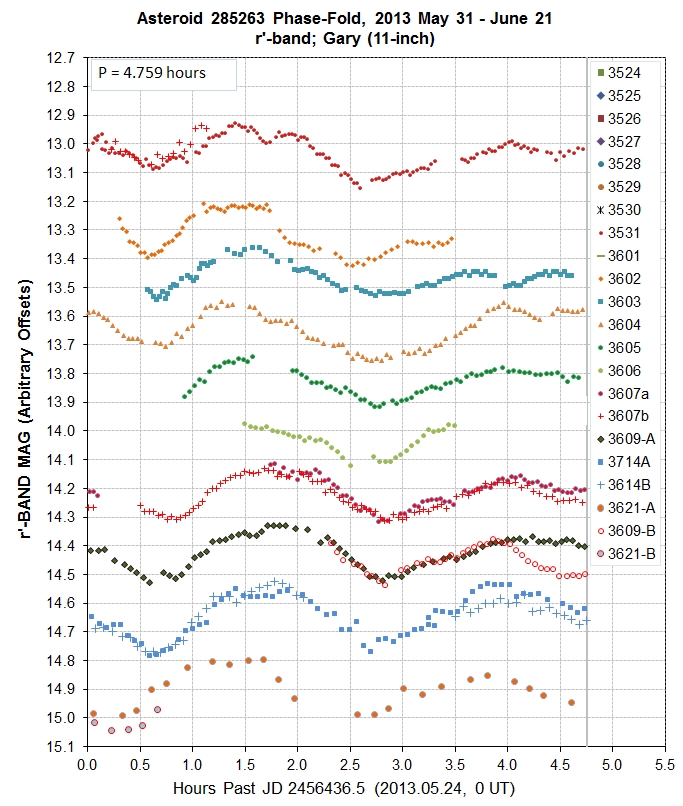
Note that when an observing session is longer than a rotation
period different symbols are used where there's phase overlap.
Individual Light Curves
2013.06.21 (6.2 hrs, 1
segment)
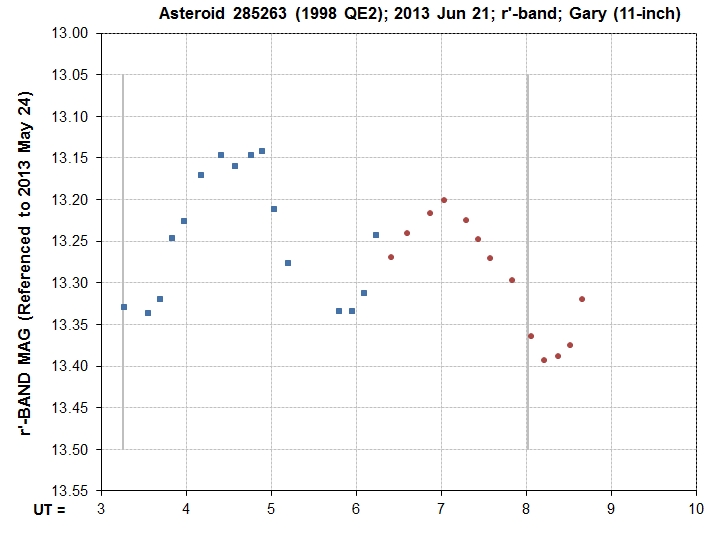
Data
for entire observing session. The two vertical lines
are separated by 4.7546 hours (Petr's periodicity of LC
variations). Ephemeris-predicted magnitude change during
observing session has been compensated for.
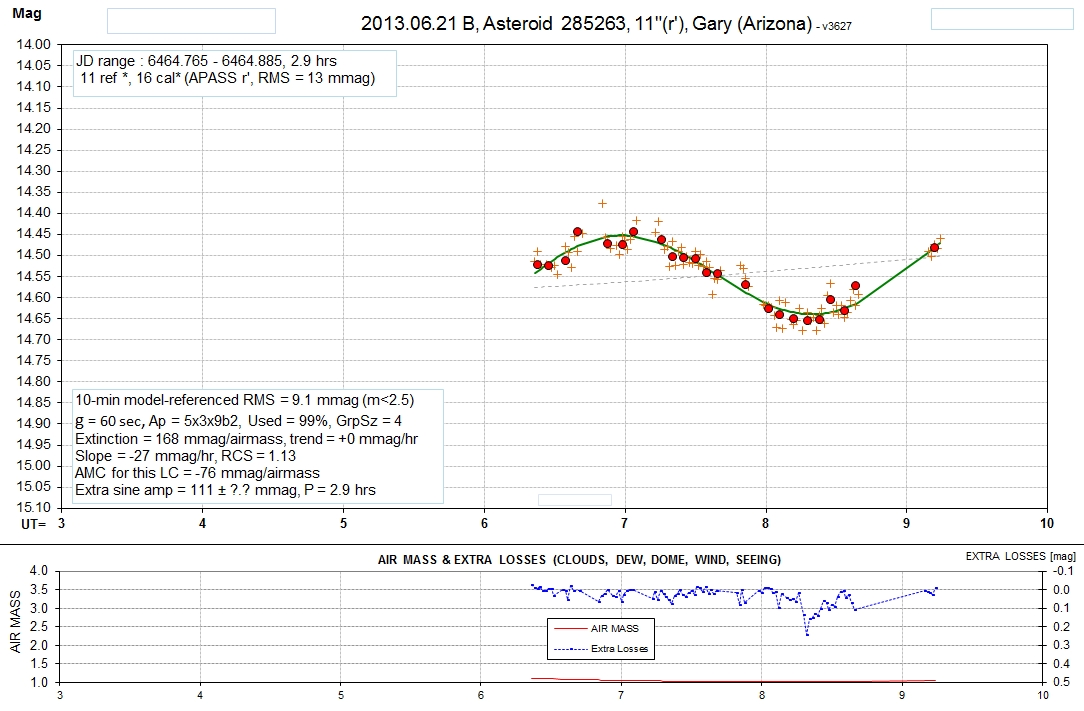
data
Data gaps correspond to passage near background star.
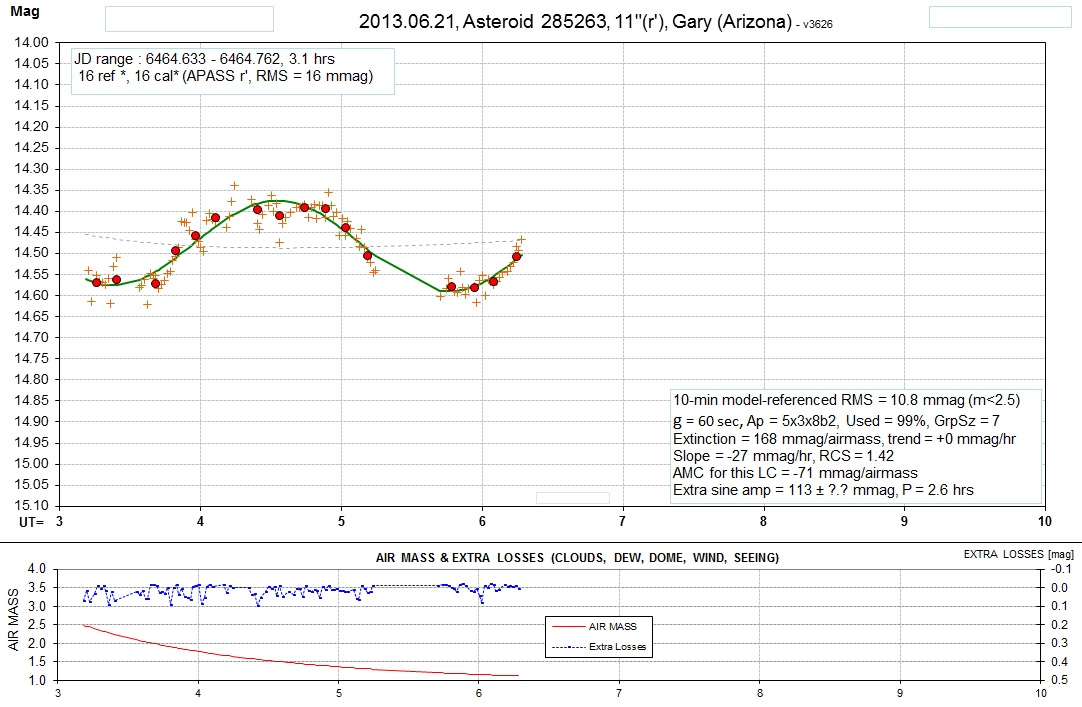
data
Even though only 1 FOV placement was used for the night the
asteroid's movement was not in a straight line for a the entirety of
the observing session, so I'm treating the night's data in two
parts. Data gaps correspond to passage near background star.
2013.06.14 (8.4 hours,
2 segments, processed)
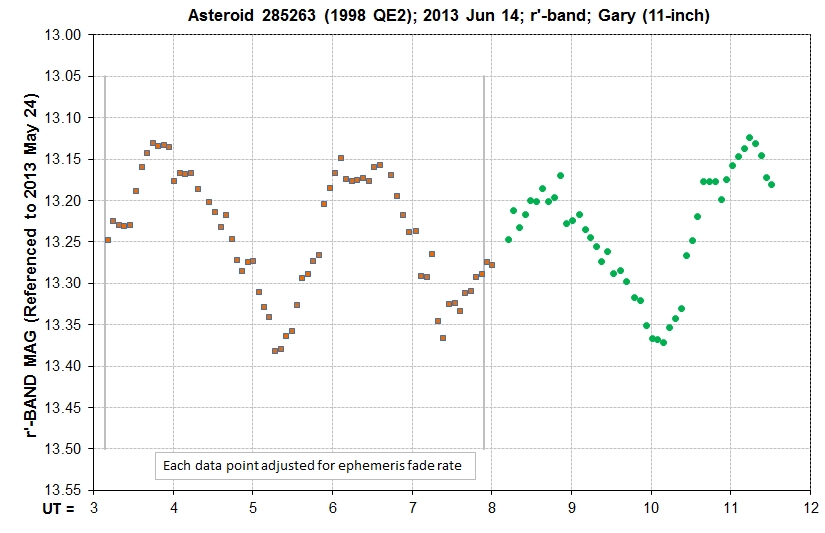
Data
for entire observing session. The two vertical lines
are separated by 4.7546 hours (Petr's periodicity of LC
variations).
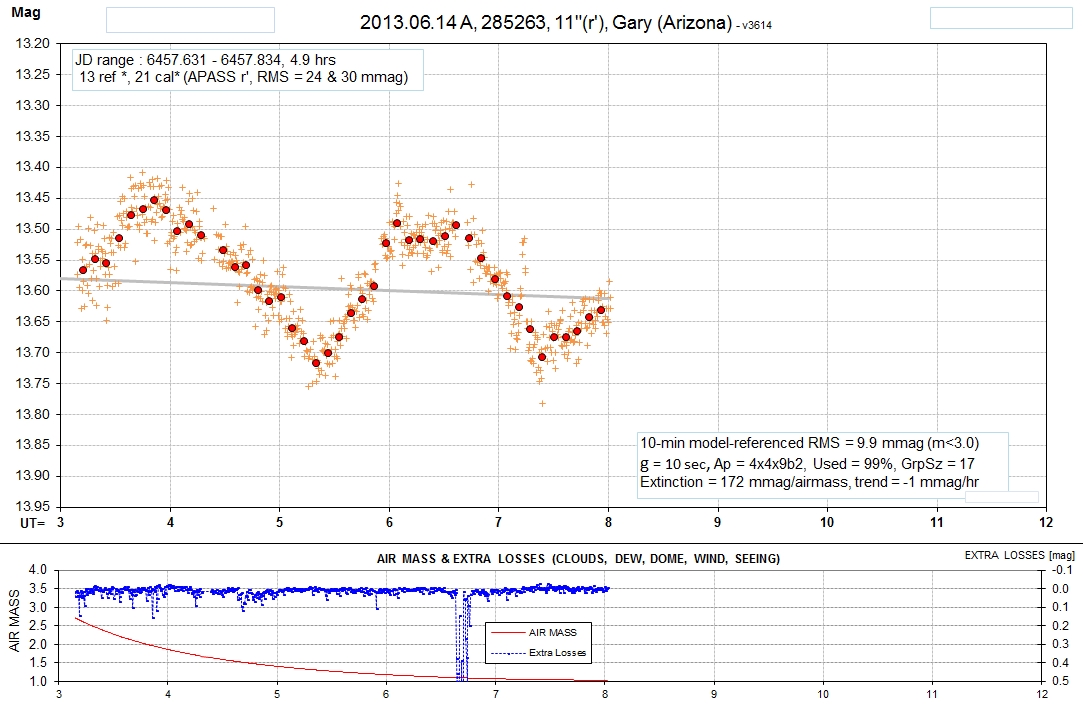
data
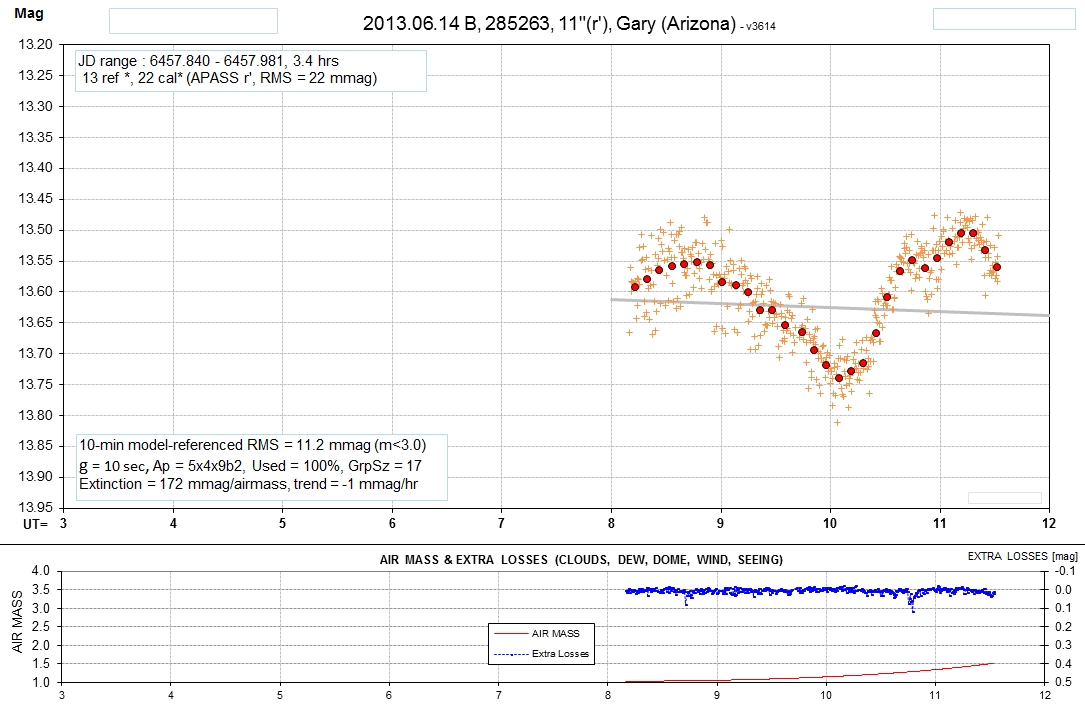
data
2013.06.09 (7.3 hours, 4
segments, processed)
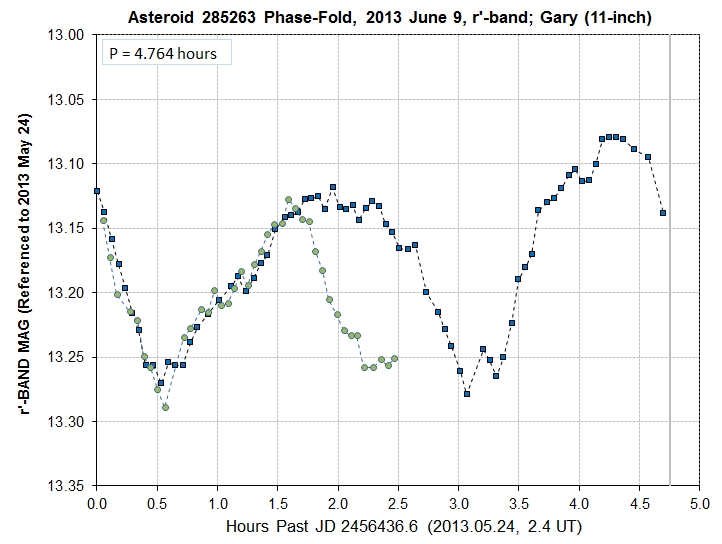
Phase folded version of this observing session showing possible
eclipse, or transit, of the secondary.
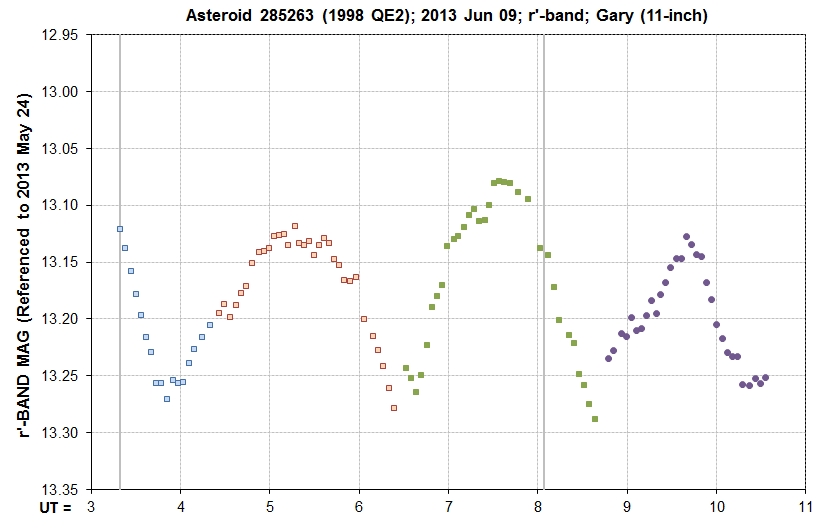
Data
for Entire Observing Session Note the two vertical lines,
separated by 4.765 hours. No magnitude adjustments have
been applied to the FOV data segments. I spent ~10
days processing this observing session's data in the most
conscientious way I could devise (using a MFE, or mosaic-based
flattening equation, for flat field calibration), so I "believe in
it." See phase-folded plot (above) for explanation of a
difference in shape and level of the last FOV segment compared
with the first one.
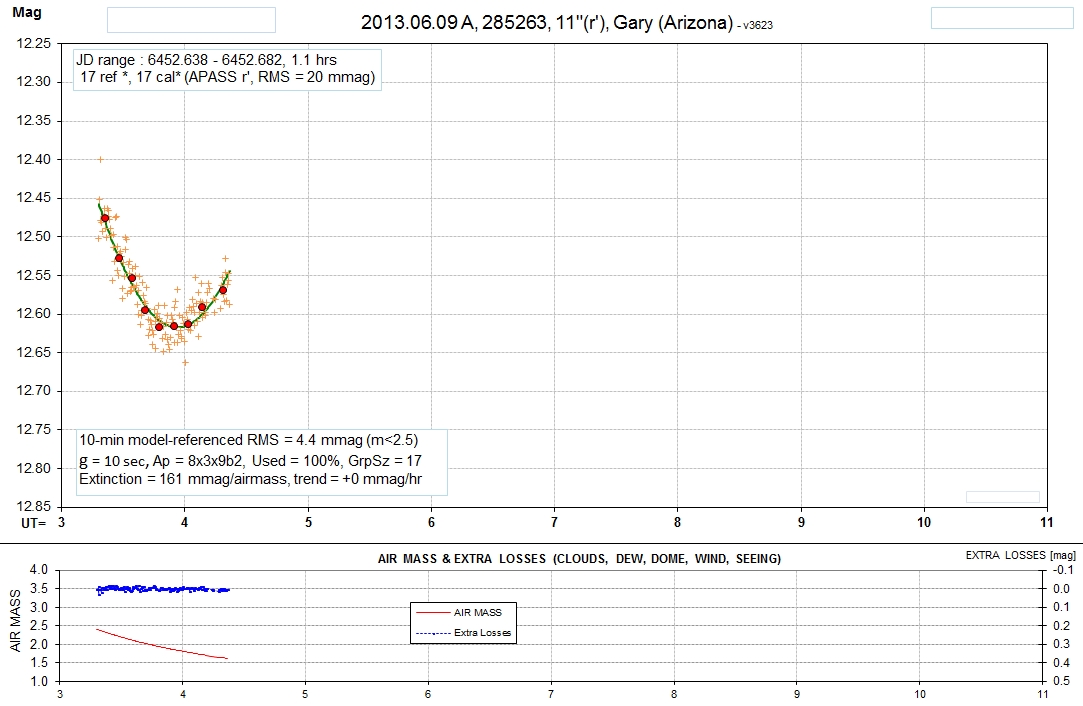
data
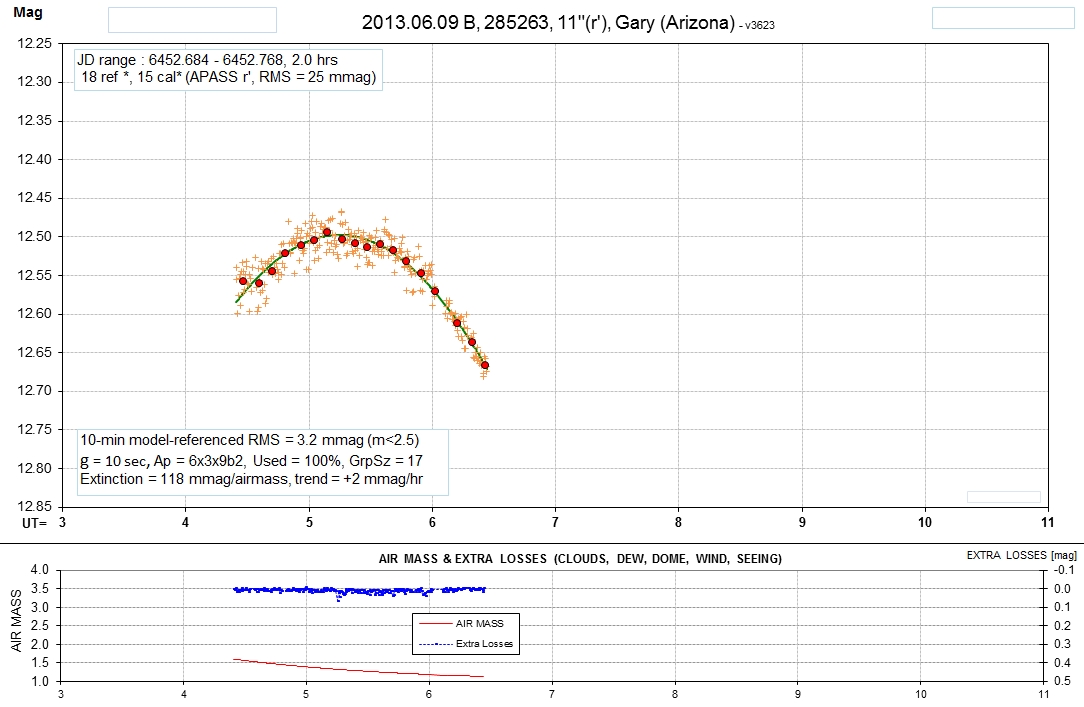
data
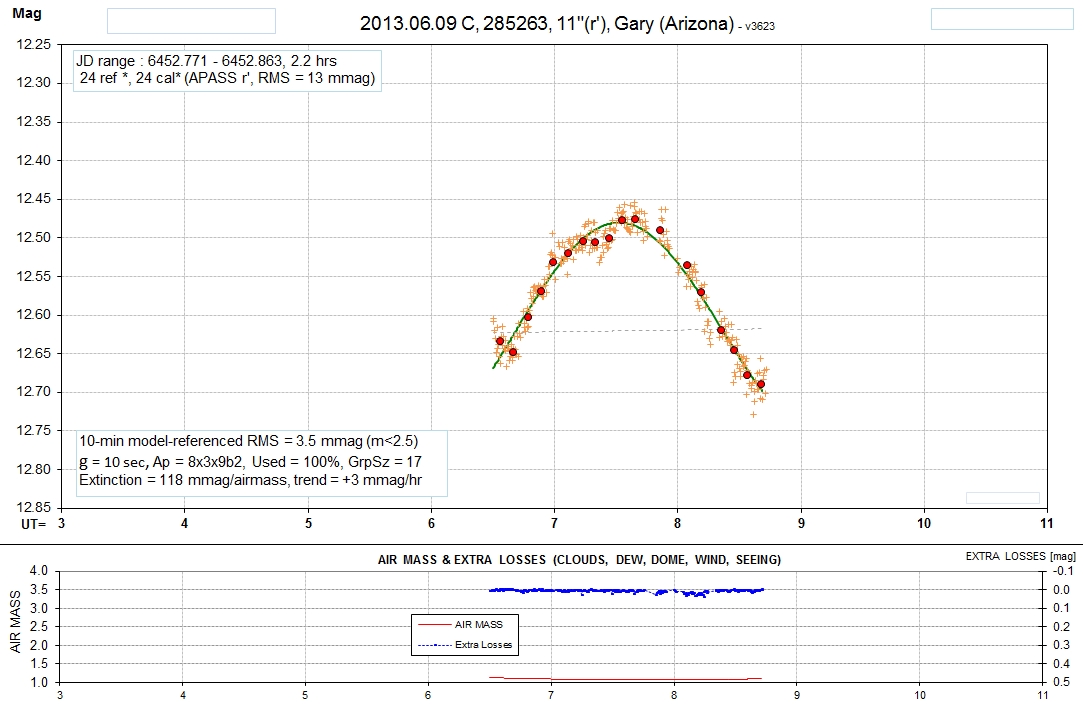
data
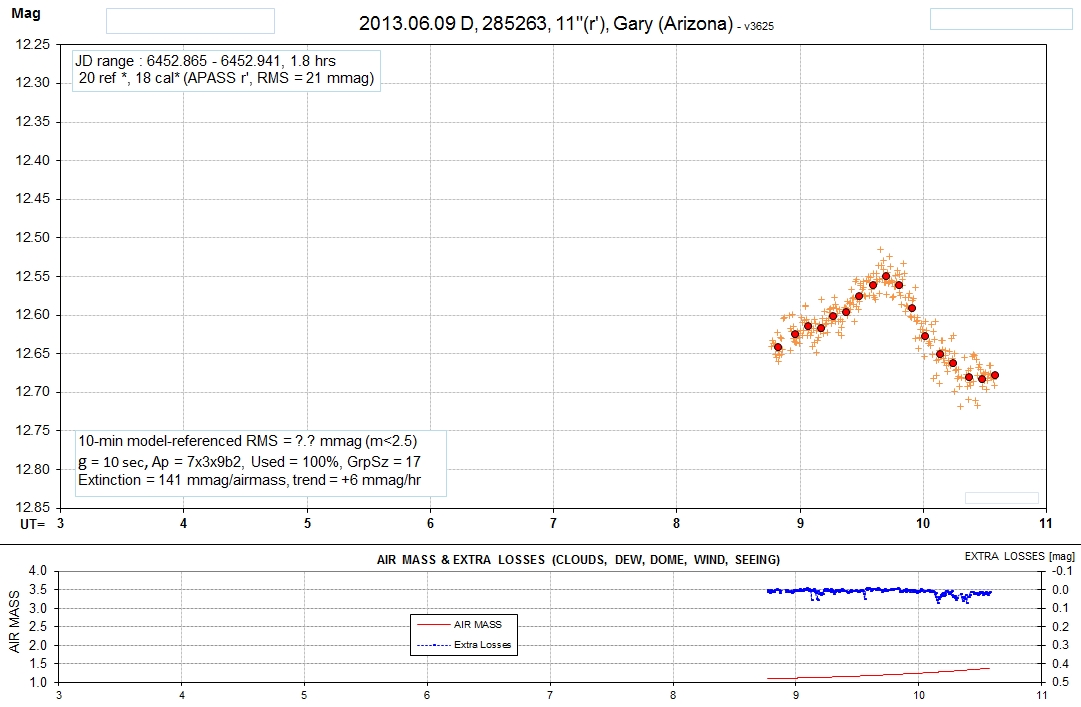
data
2013.06.07 (7.9 hrs, 6
segments, all 6 processed)
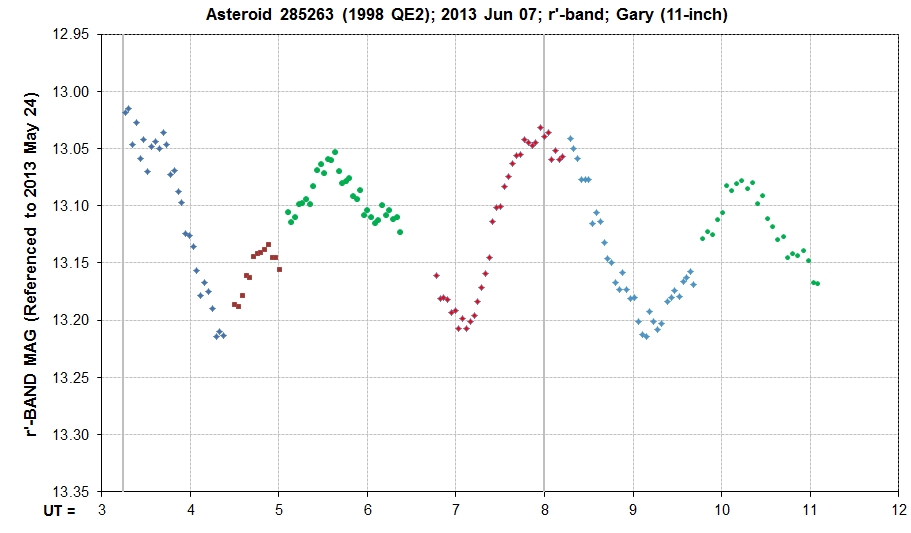
Data
for Entire Observing Session MFE processed data. Note the
two vertical lines, separated by 4.764 hours. No
magnitude adjustments have been applied to the FOV data segments.
A fading trend is evident (even though each FOV segment has been
adjusted for ephemeris-predicted magnitude).
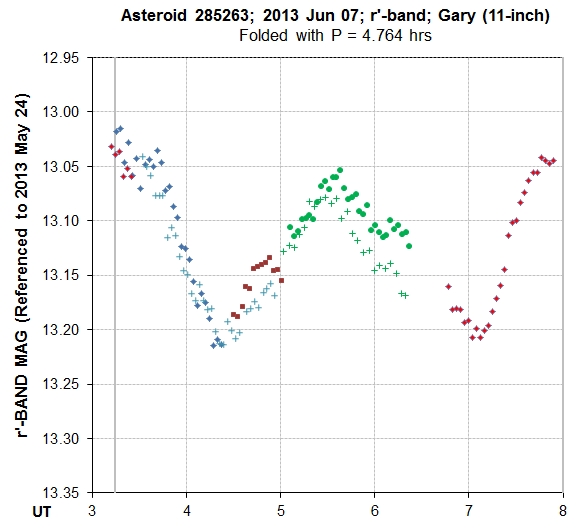
Same data as above but phase folded.
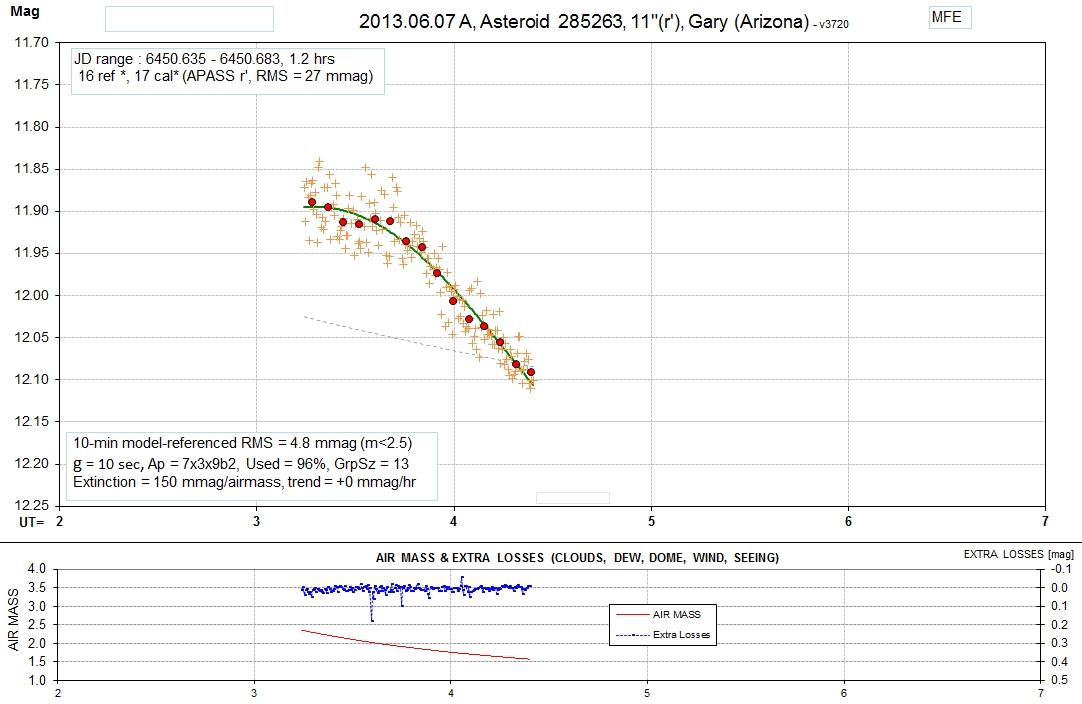
data
MFE processed.
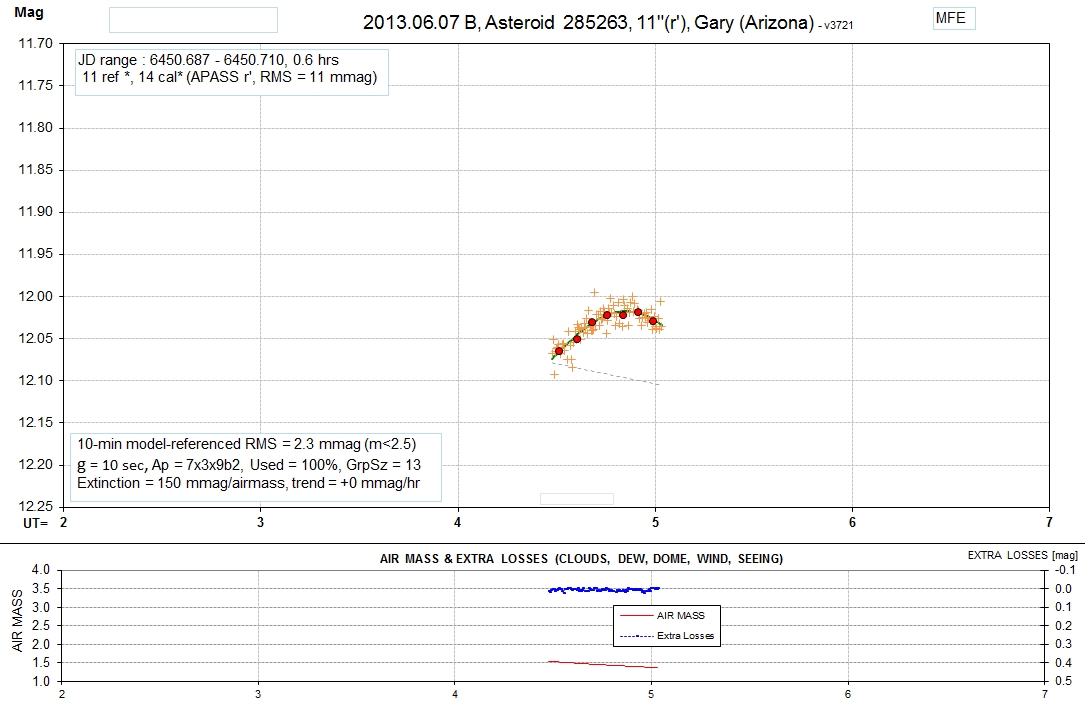
data MFE
processed.
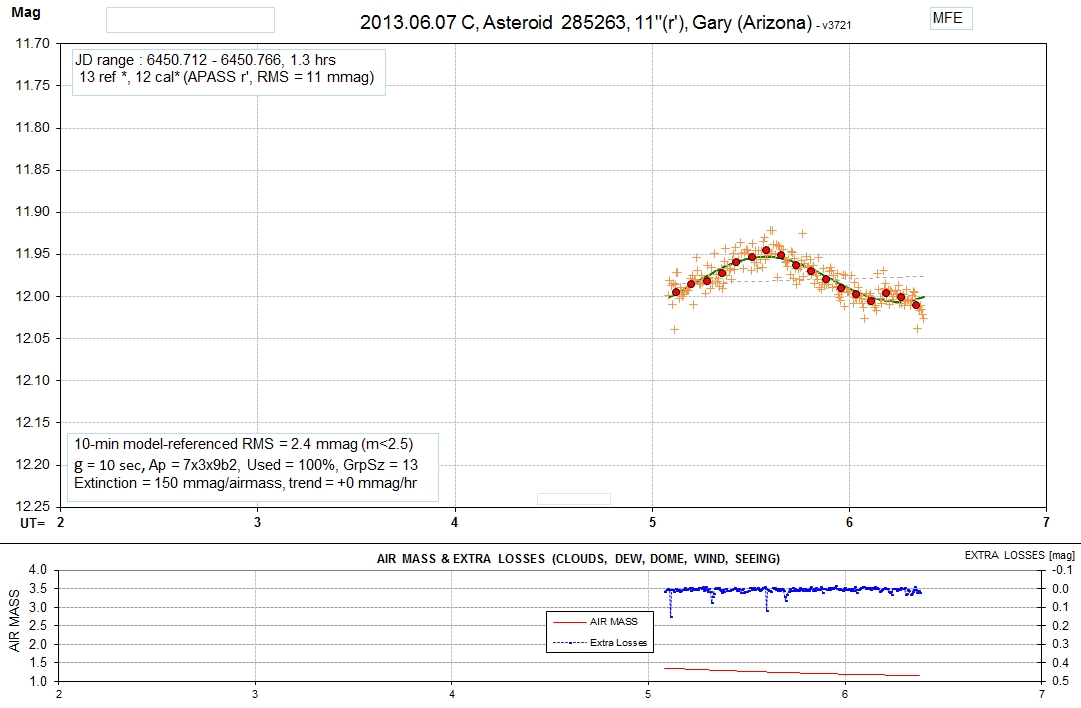
data MFE
processed.
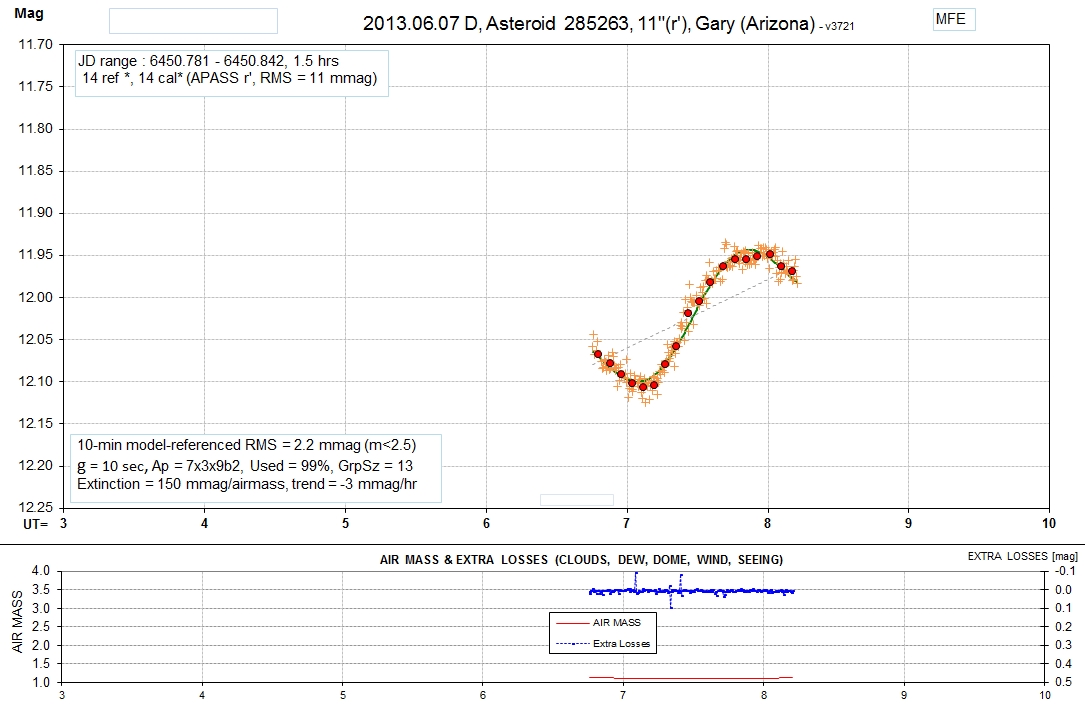
data MFE
processed.
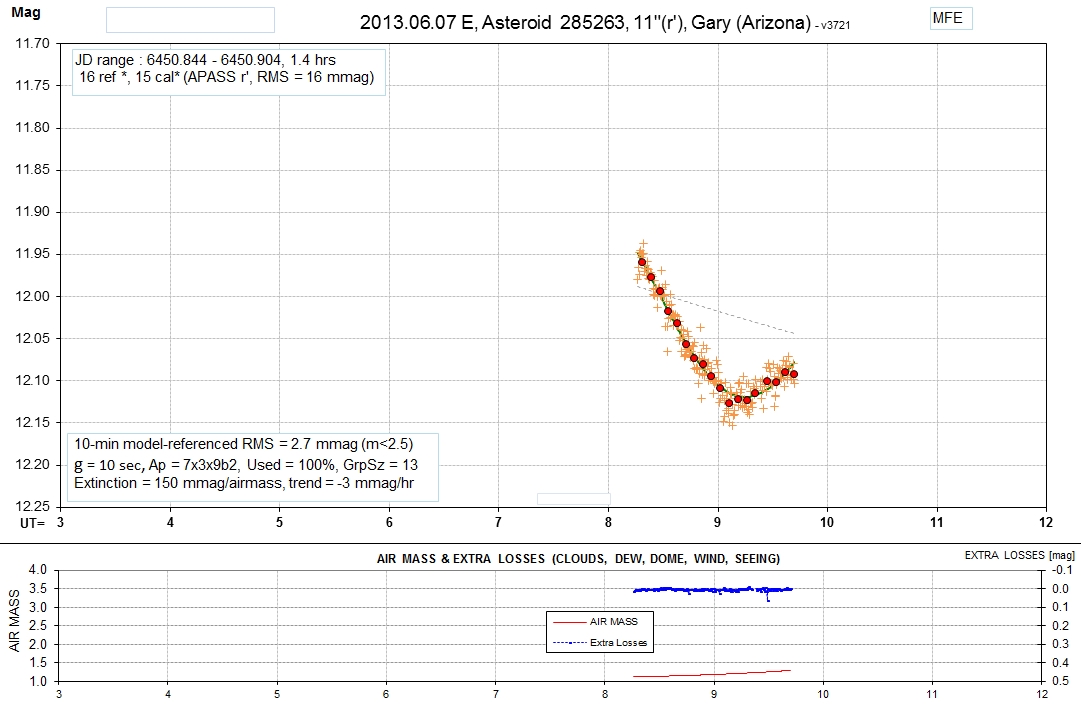
data MFE
processed.
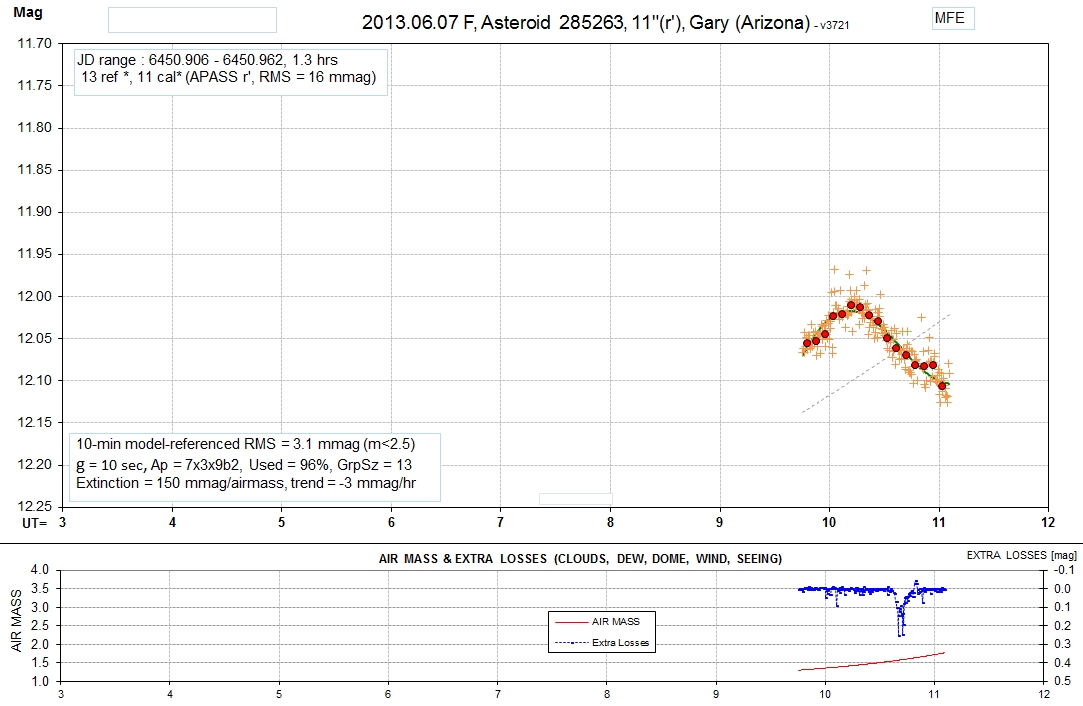
data MFE
processed.
2013.06.06 (2.0
hrs, 2 segments, process complete)
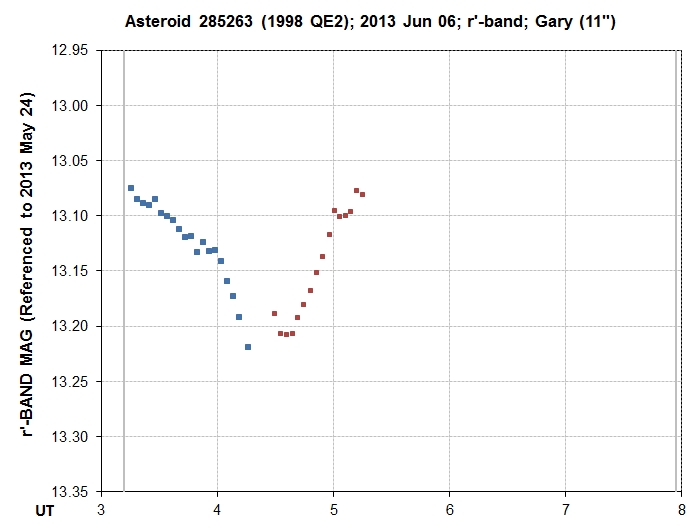
Data
for entire obs'g session. Combining FOV segments
(w/o mag adjustments). Both segments processed using MFE.
A secondary event is predicted for 4.0 UT, and it appears to be
present at 4.3 UT in this LC.
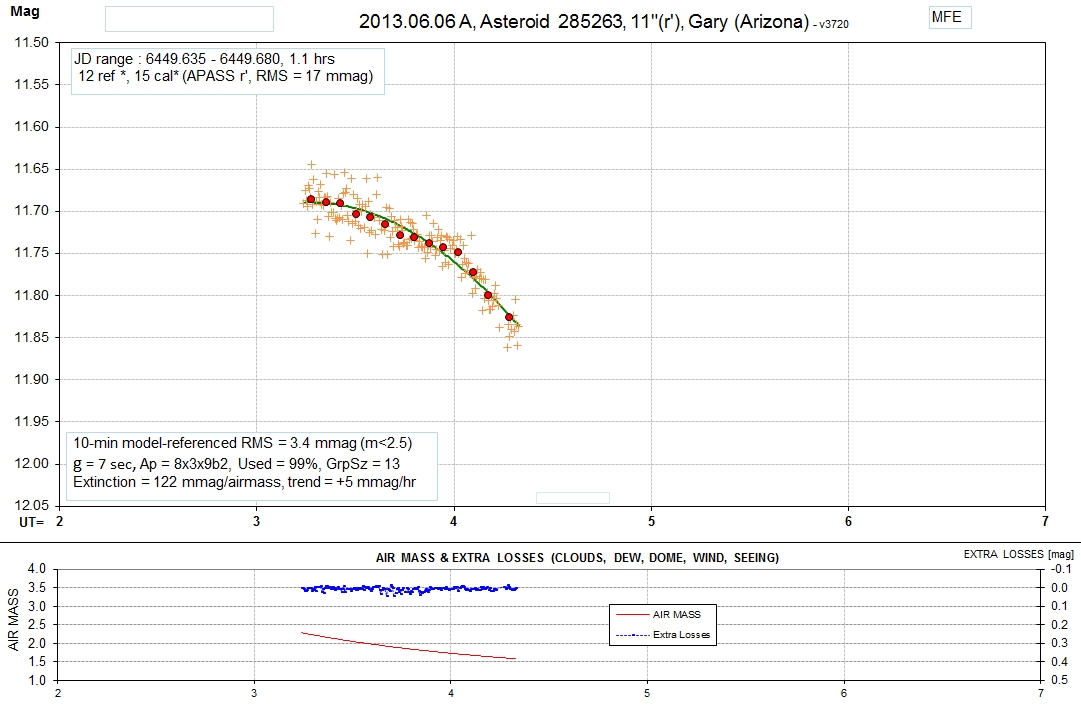
data
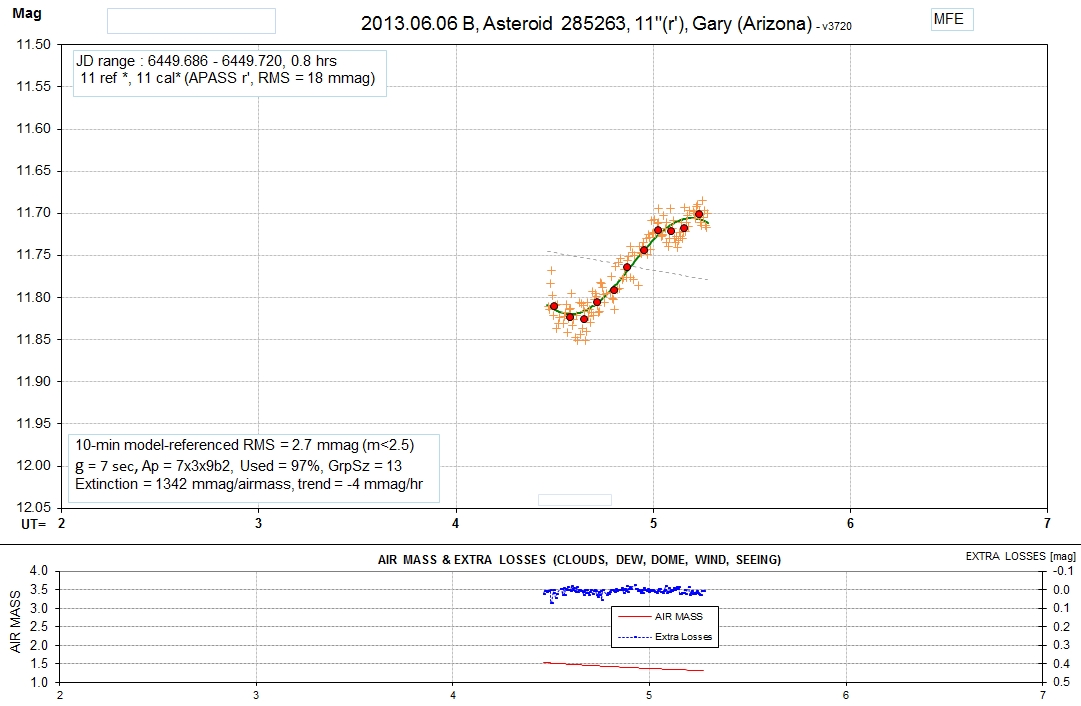
data
2013.06.05 (3.8 hrs, 4
segments, 4 done)
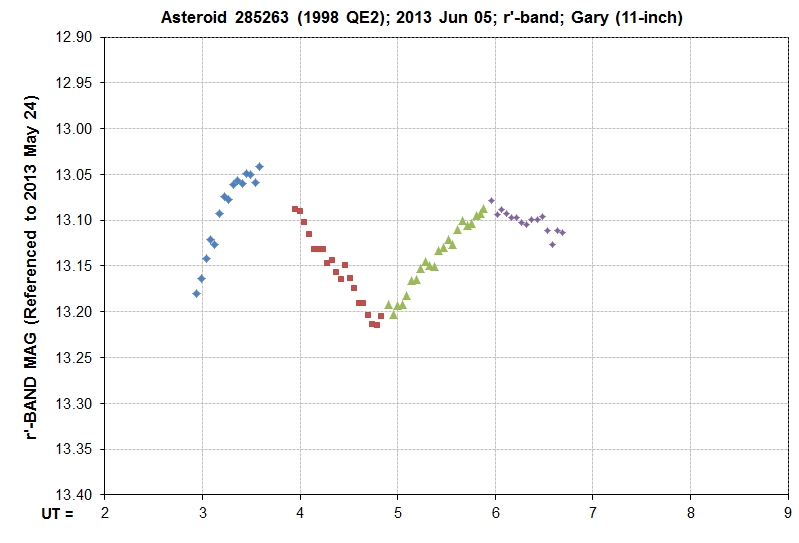
Data for
Entire Observing Session (not updated yet). Combining FOV
segments (w/o mag adjustments). All data reprocessed using MFE.
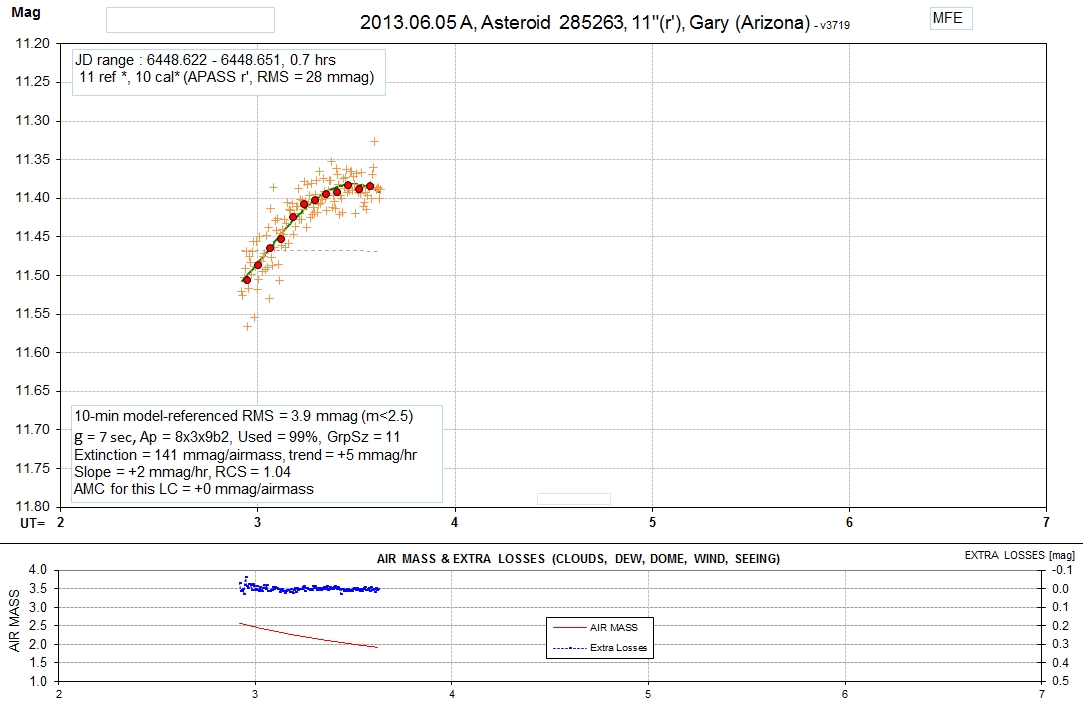
data
Re-processed using MFE procedure. The first 10
minutes were made before sky was dark & are therefore suspect.
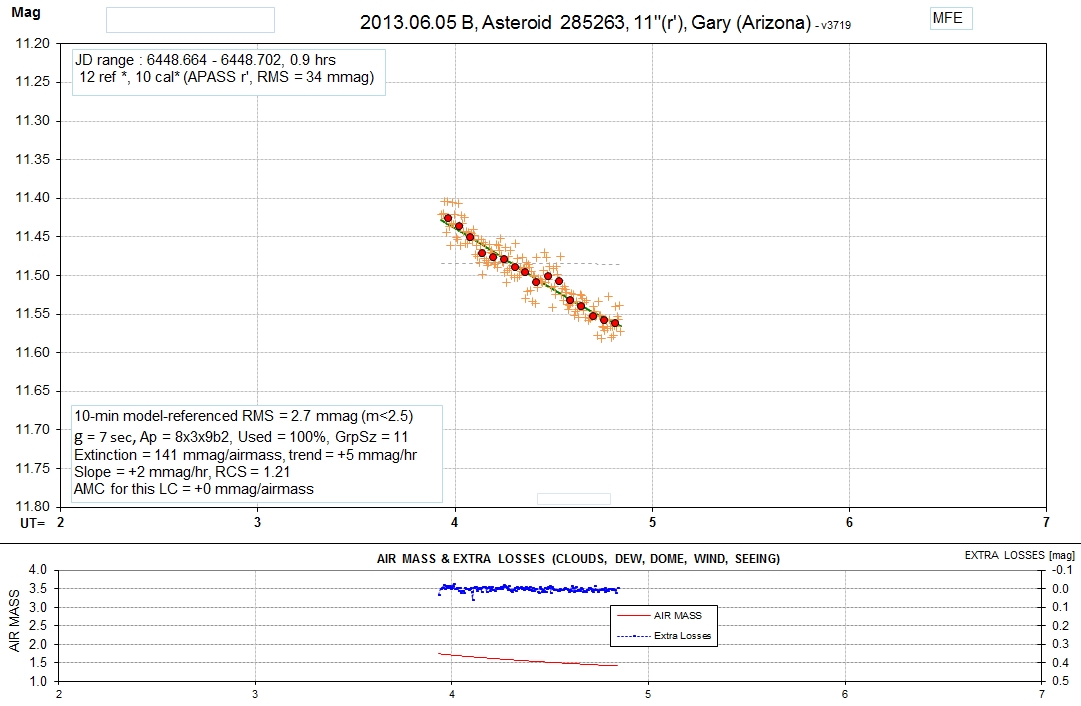
data
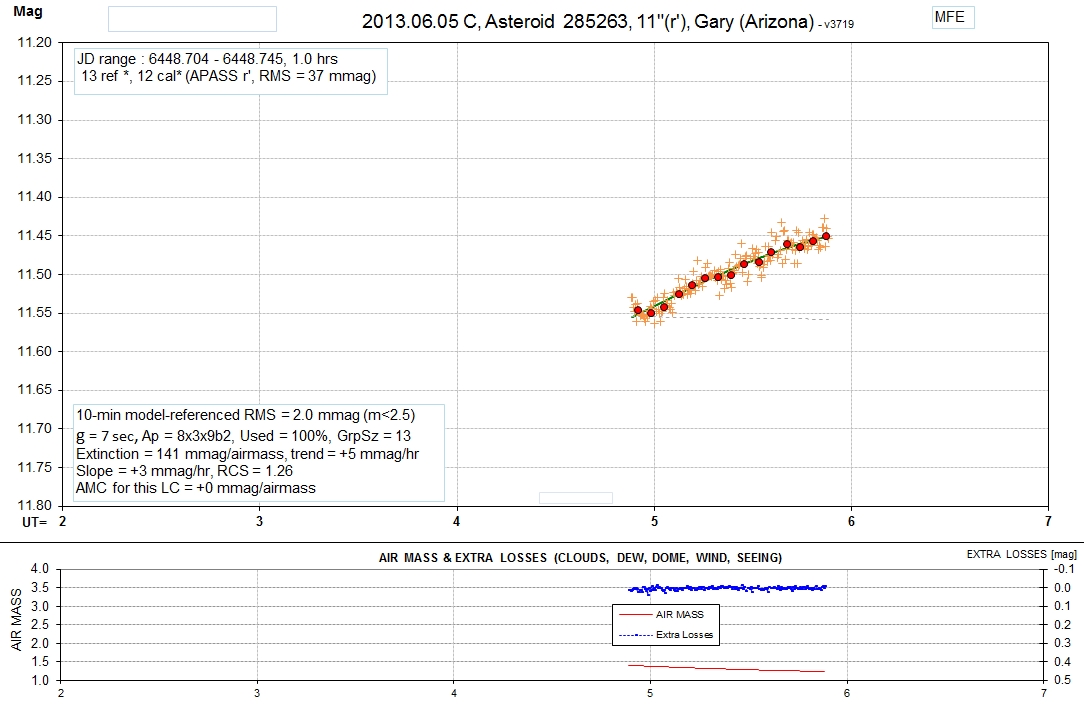
data
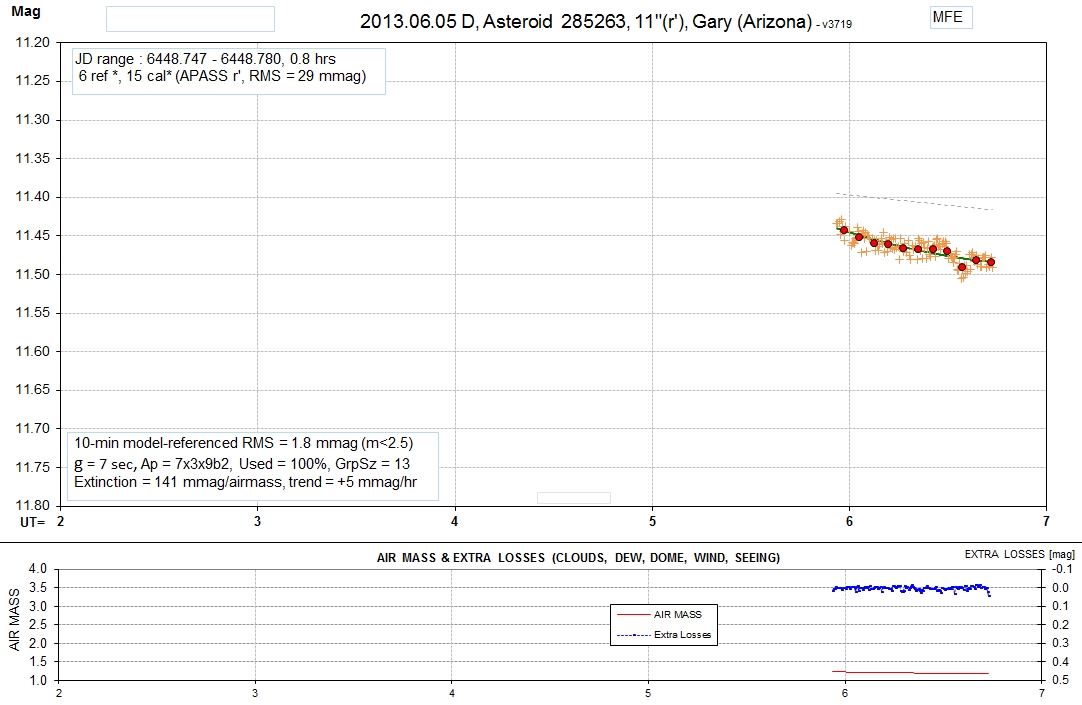
data
2013.06.04 (4.5 hrs, 6
segments, 3 done using MFE)
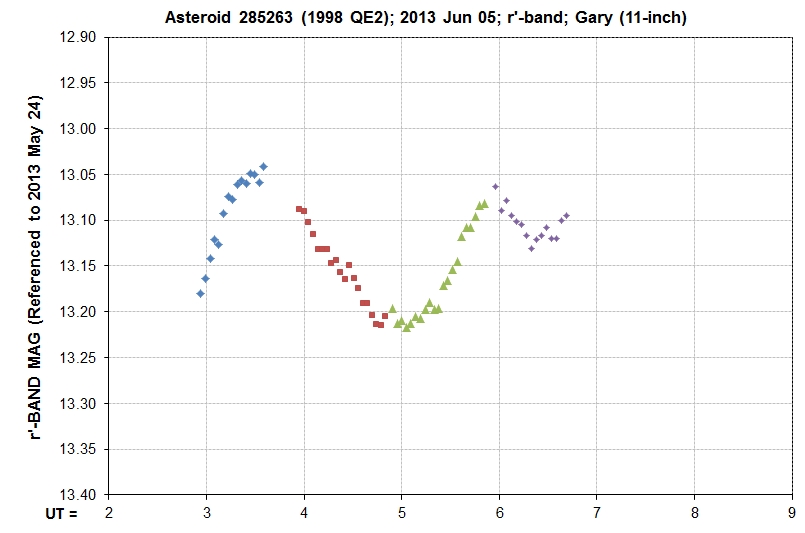
Data
for entire observing session No FOV
segment magnitude adjustments yet. All
segments have been processed using the MFE procedure. A
primary transit is predicted for 5.1 UT.
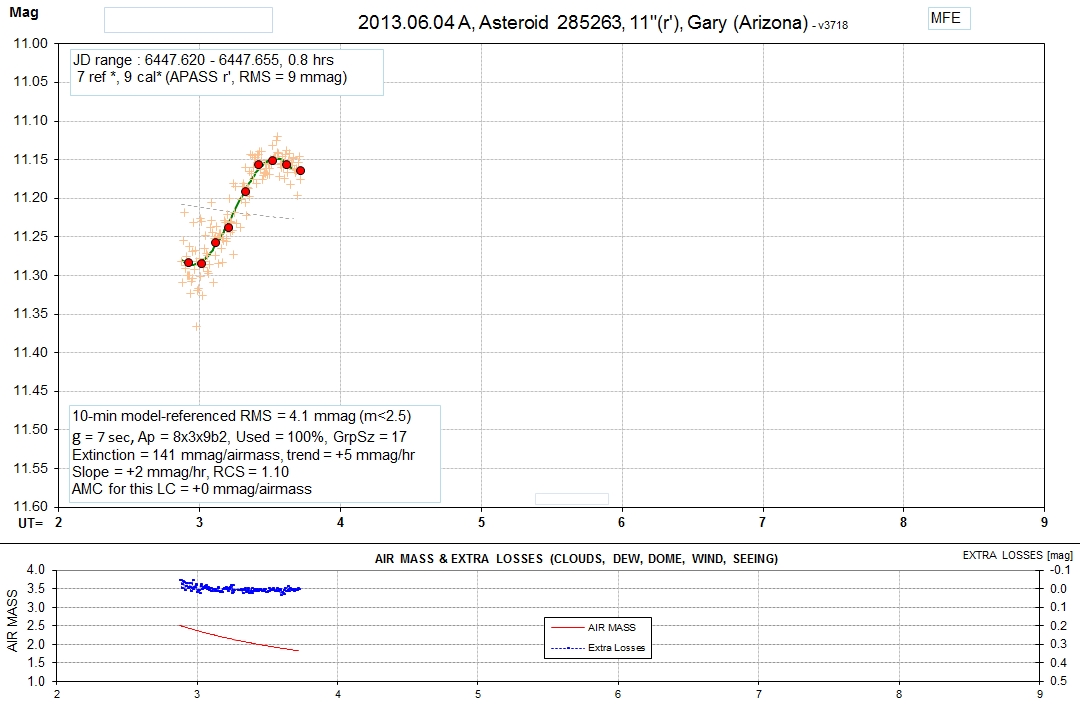
data
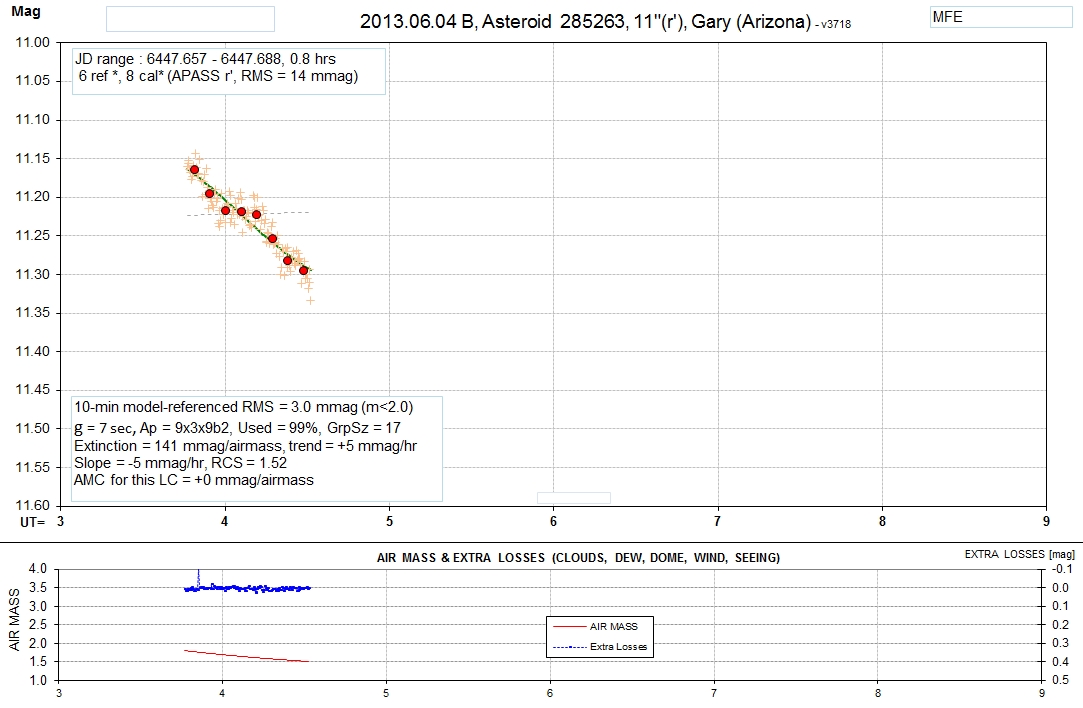
data
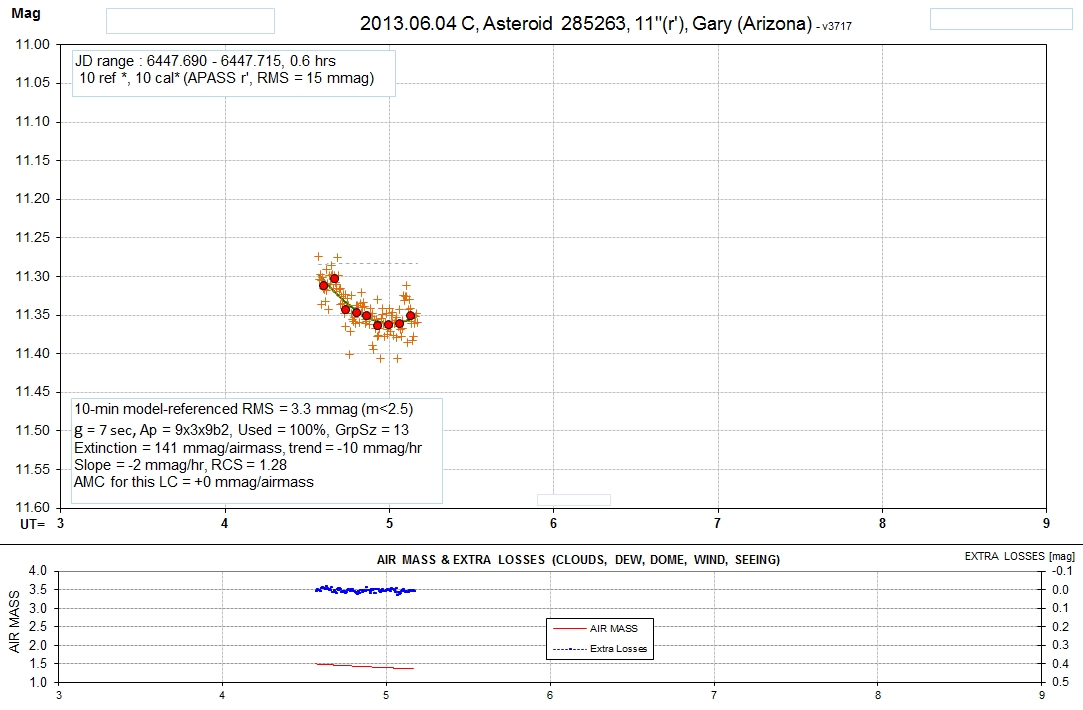
data
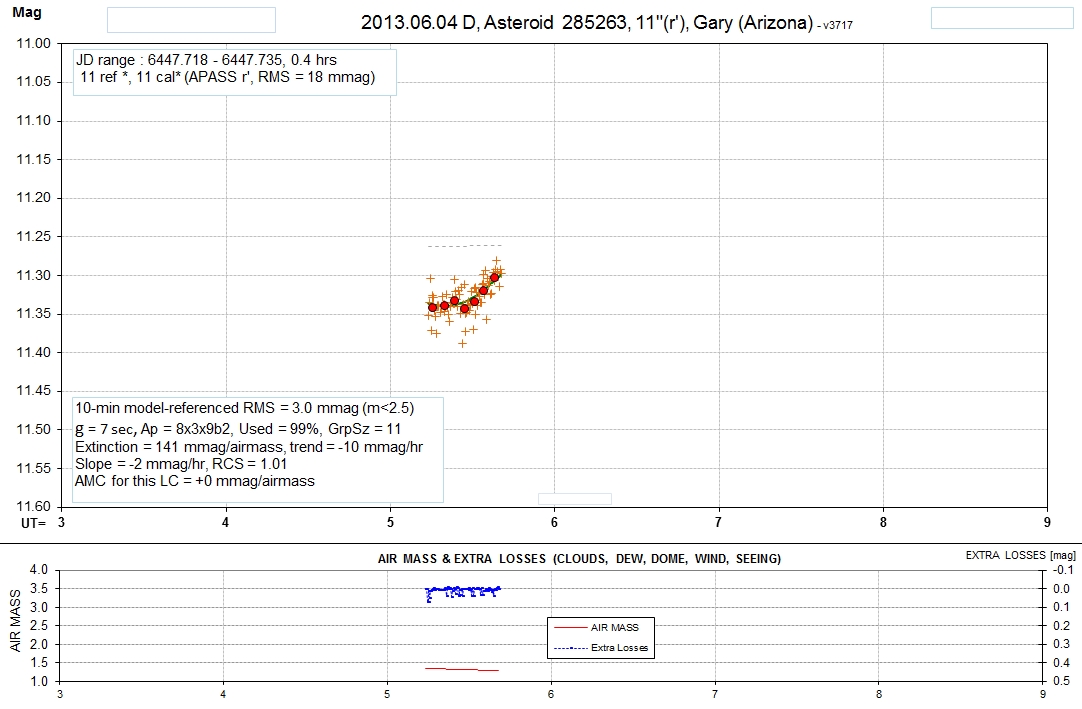
data
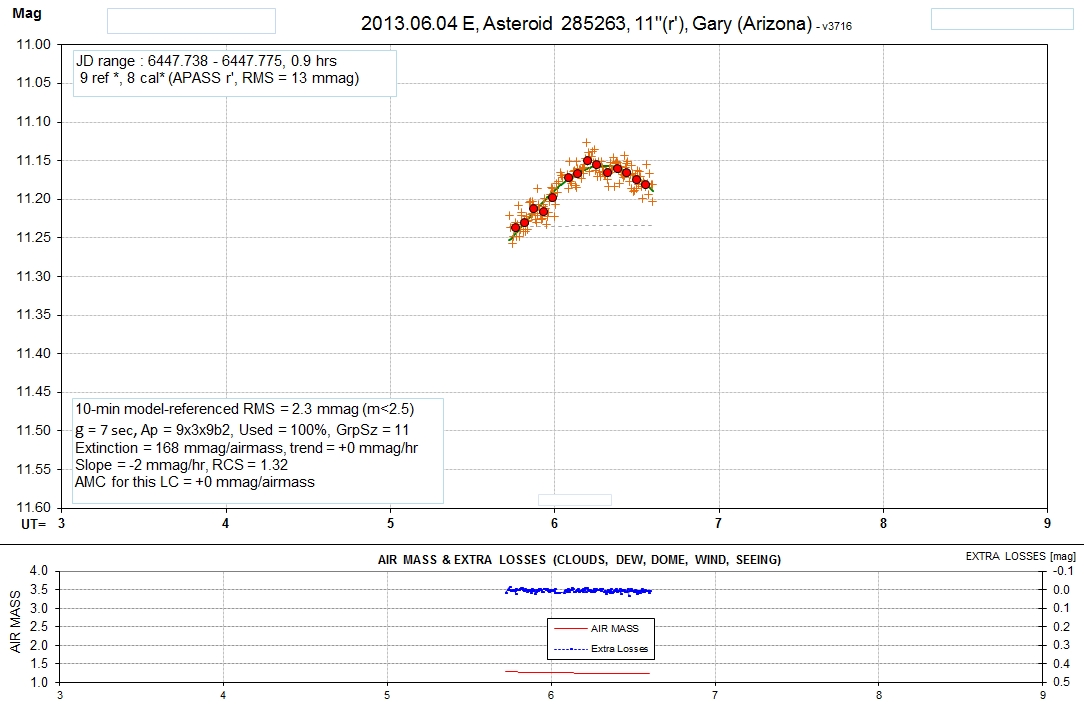
data
Uses MFE (HighSpatialFreq flat).
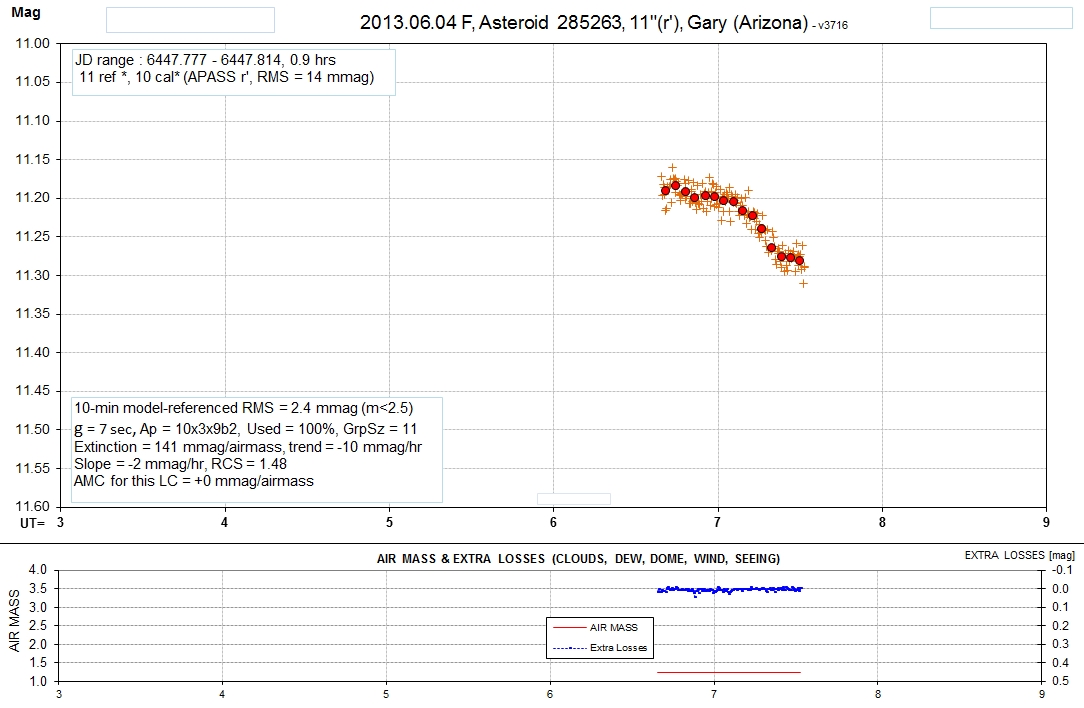
data
2013.06.03
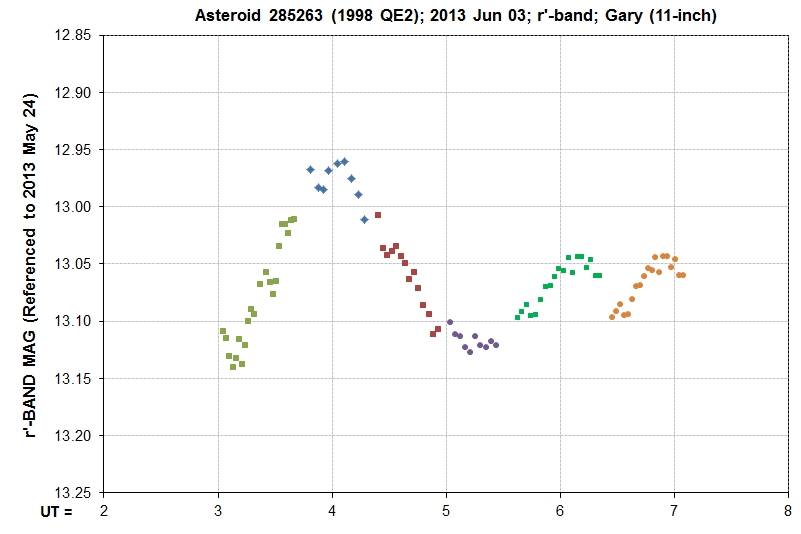
Data
for Segments using MFE No FOV segment adjustments.
All data processed using MFE.
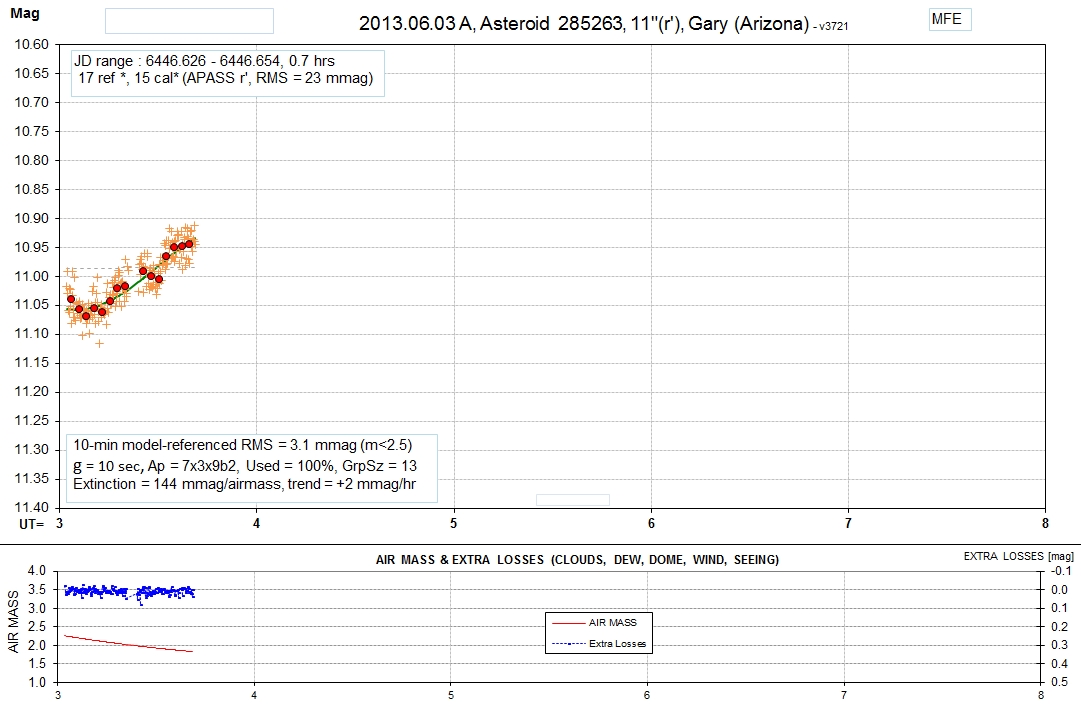
data
Reprocessed using MFE.
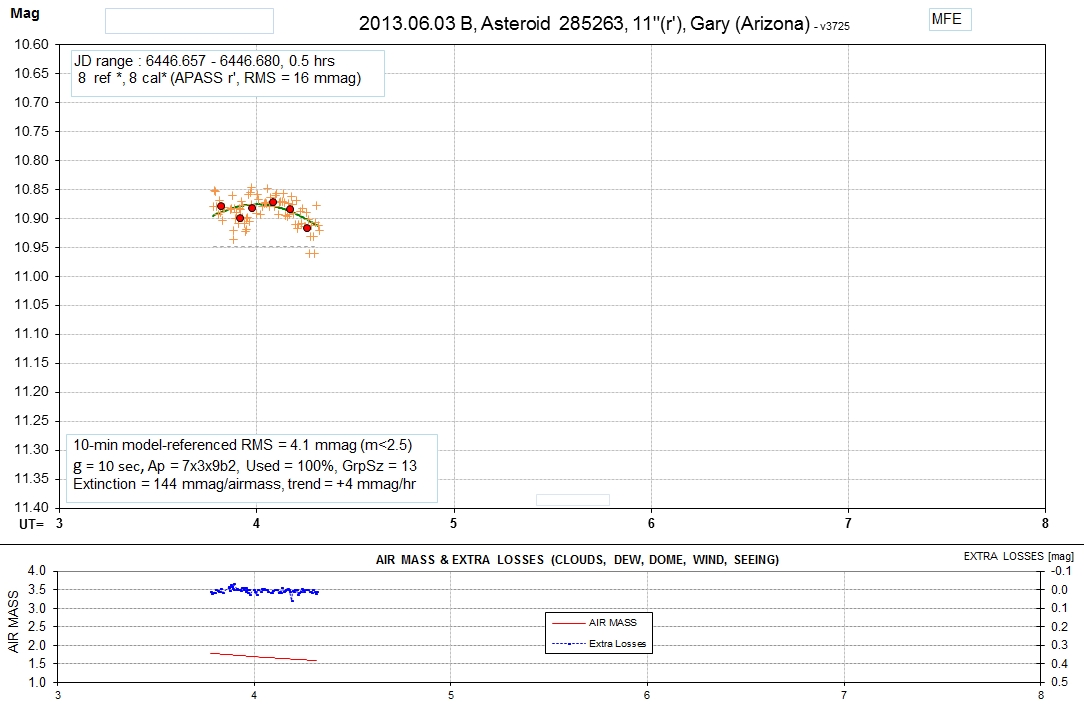
data
Reprocessed using MFE.
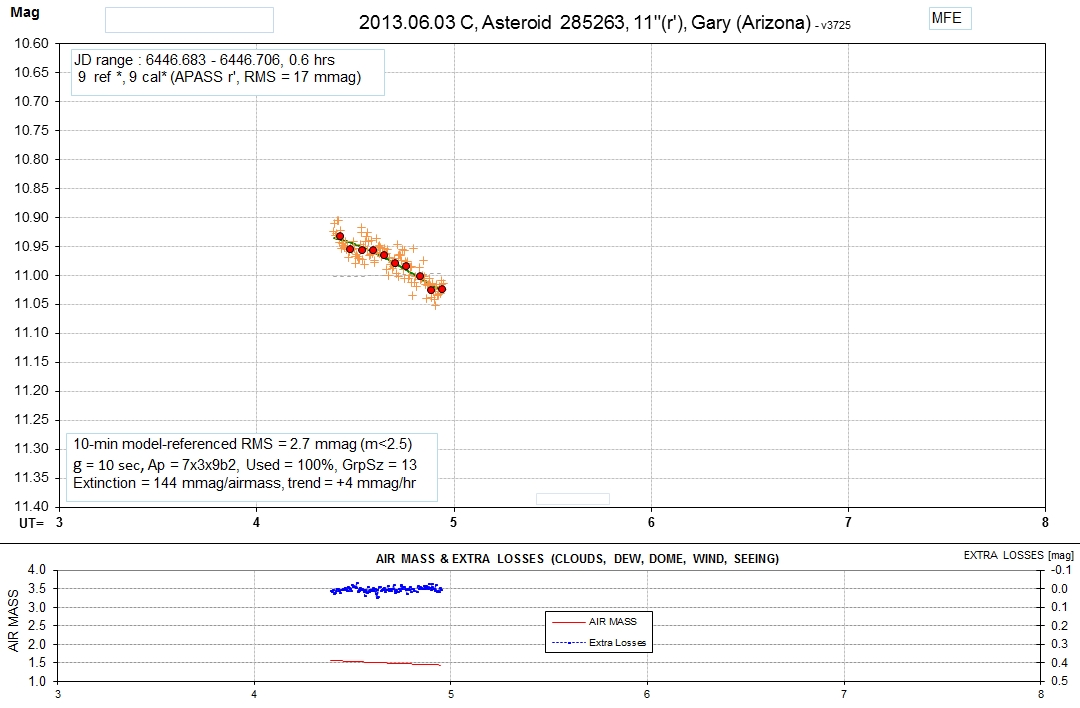
data
Reprocessed
using MFE.
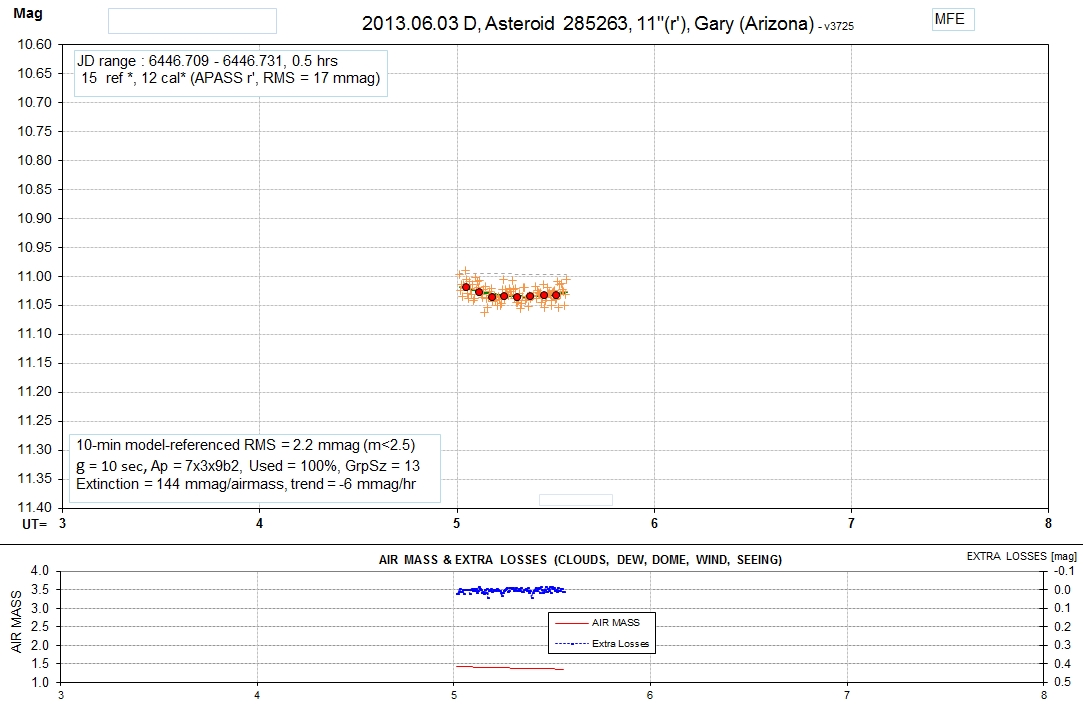
data
Reprocessed
using MFE.
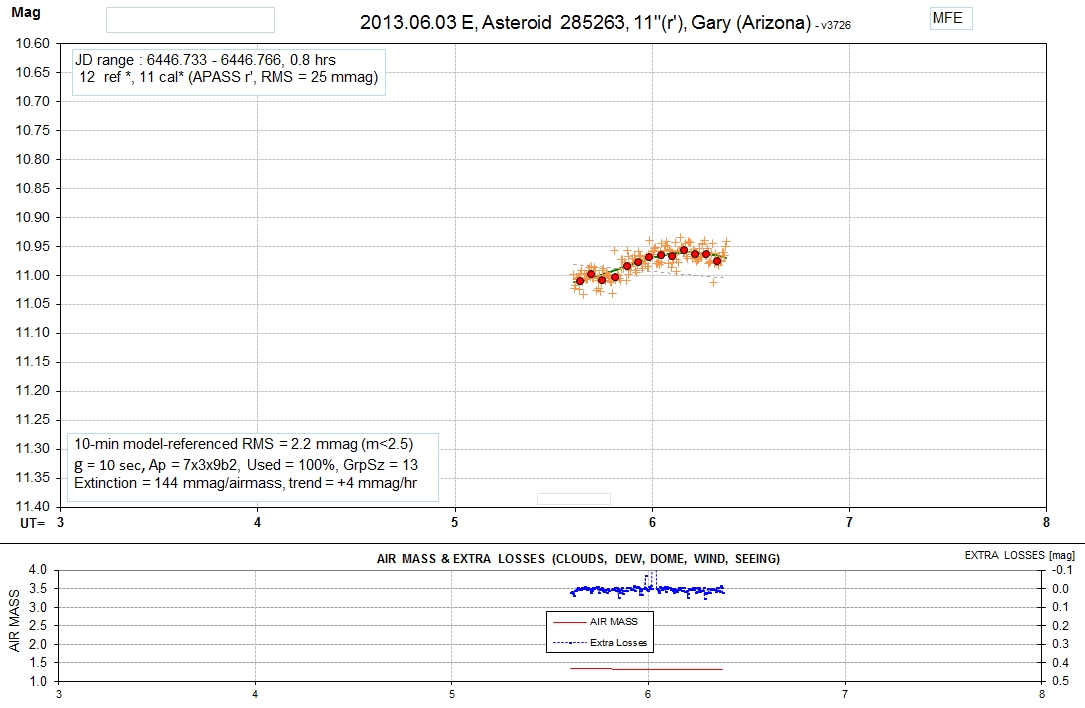
data
Reprocessed
using MFE.
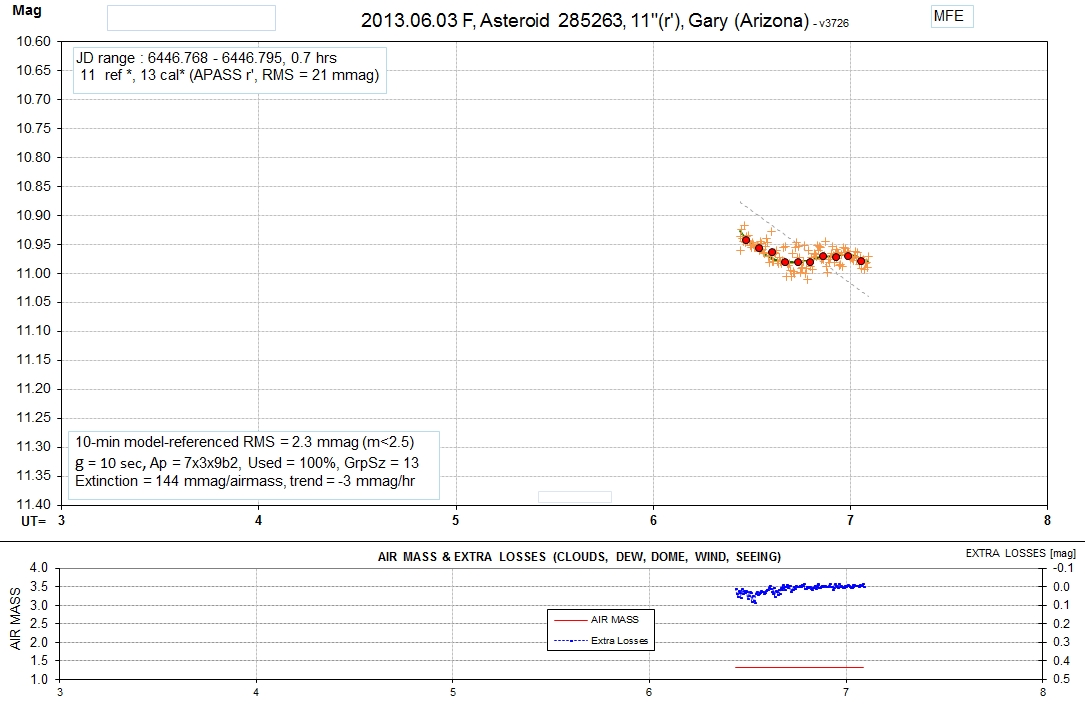
data
2013.06.02
5 FOV segments, all processed
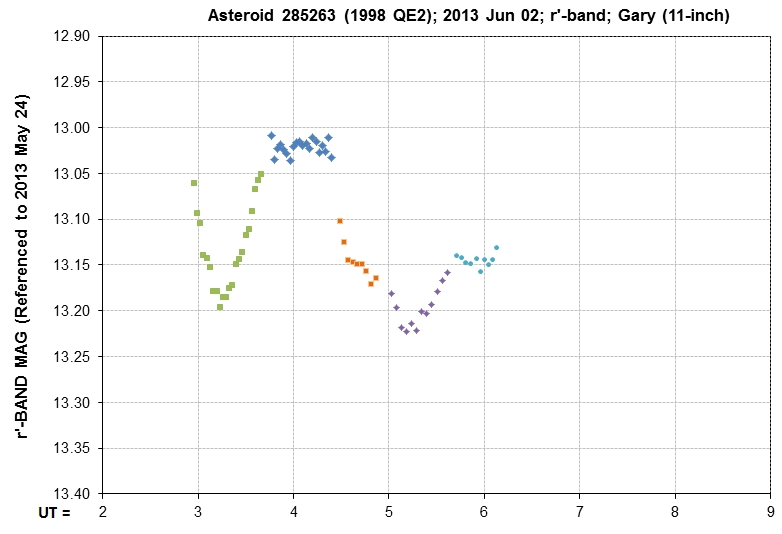
Data for Entire Observing Session Combining of FOV
segments without magnitude adjustments. A secondary event
is predicted for 6.1 UT.
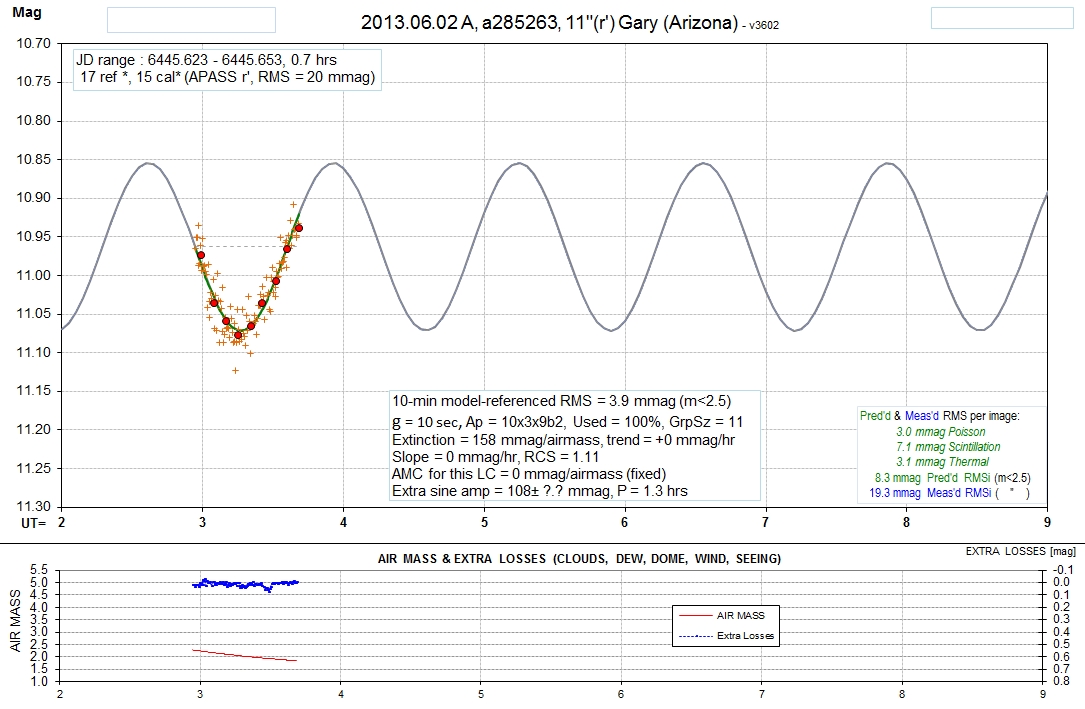
data
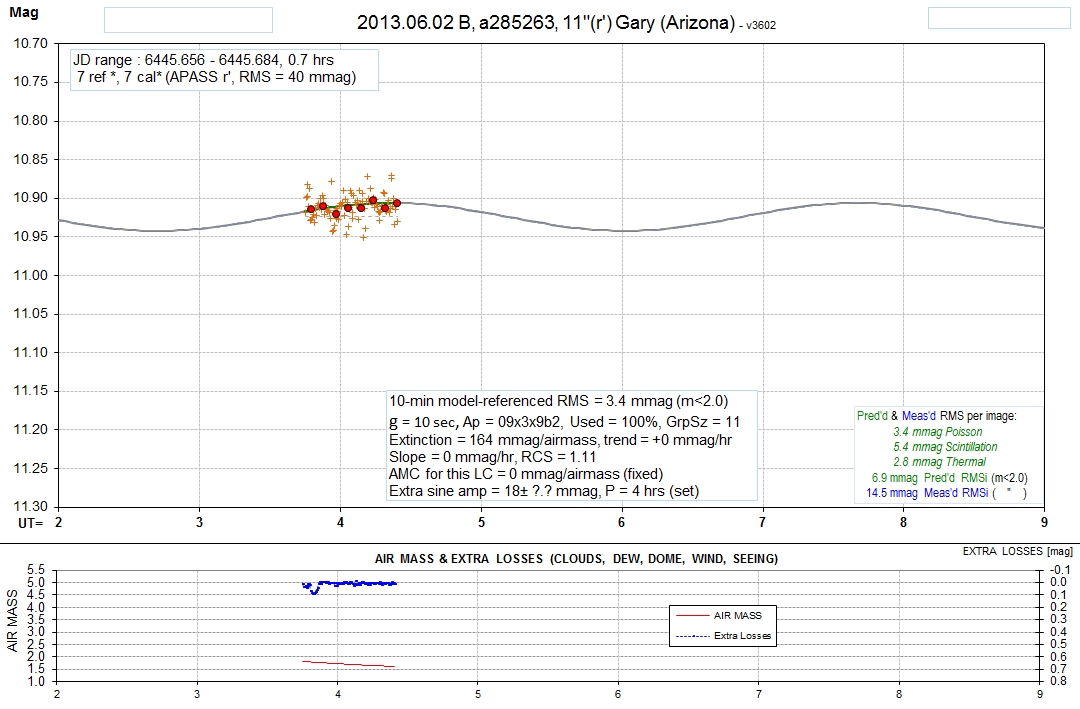
data
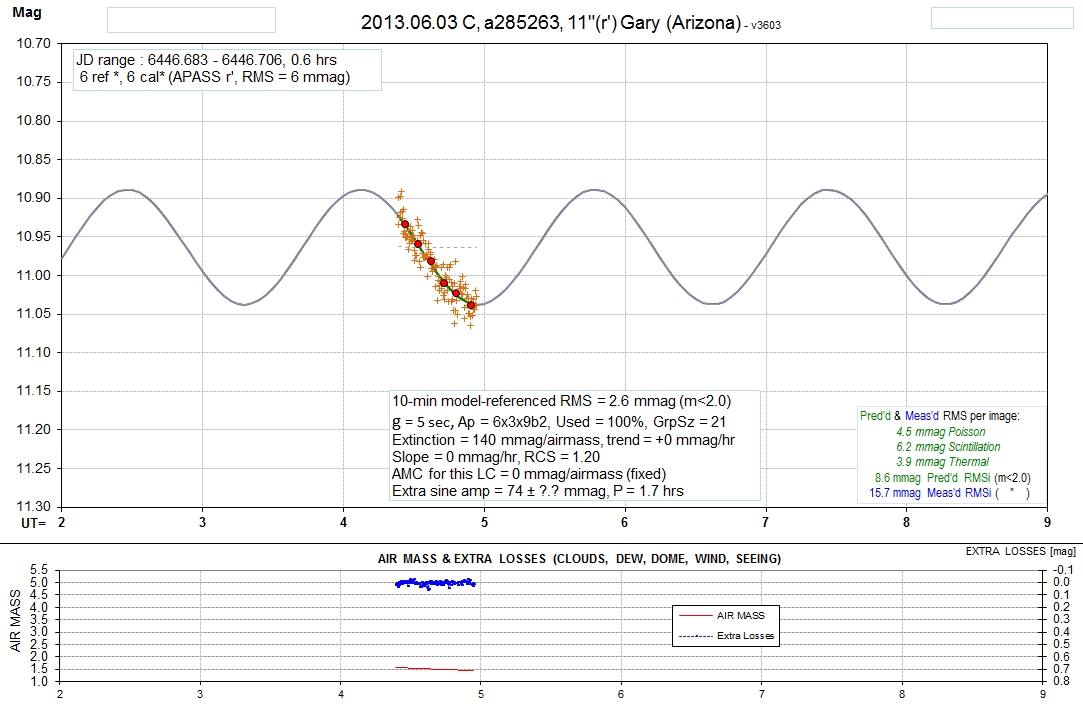
data
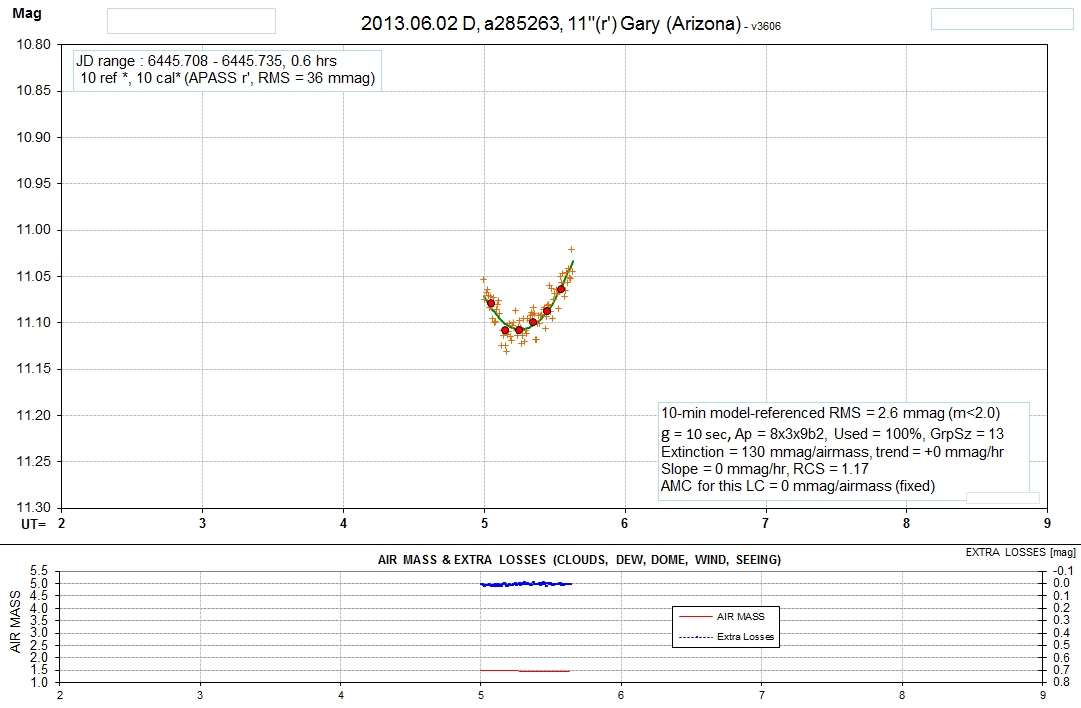
data
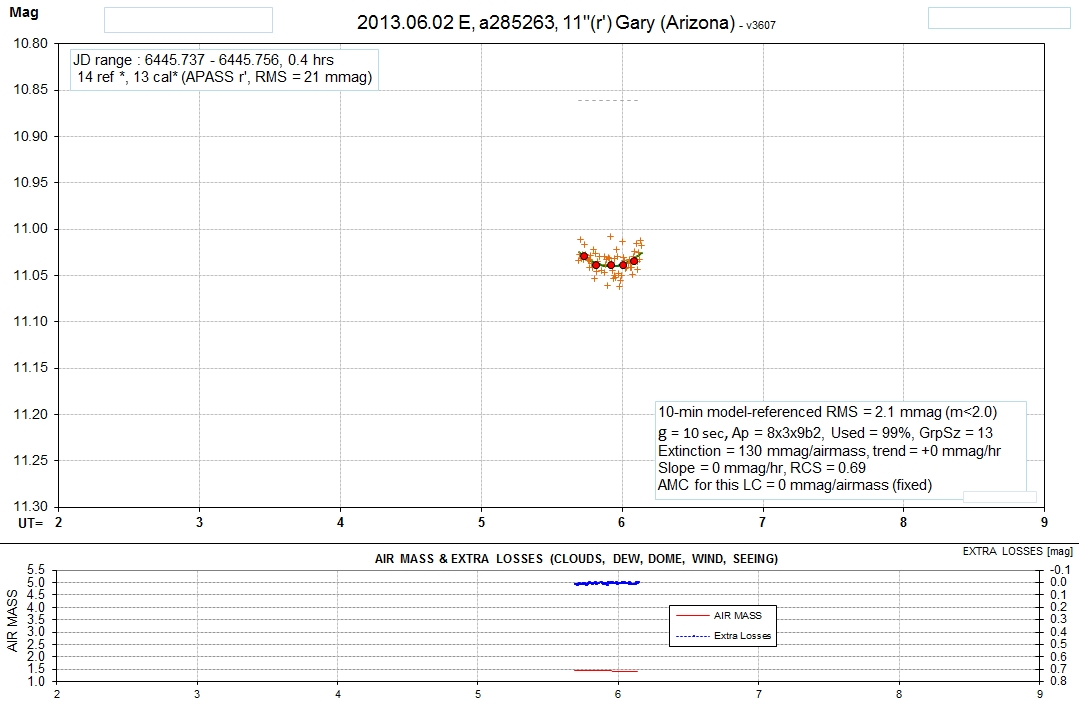
data
2013.06.01
5 FOV segments,
not yet processed.
2013.05.31
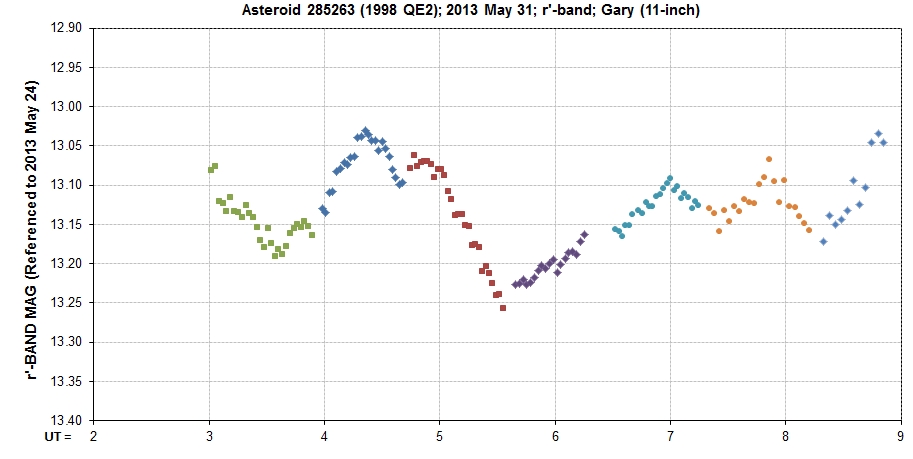
Data
for Entire Observing Session A
primary event is predicted for 7.2 UT, and indeed there is a
"dip" at 7.4 UT.
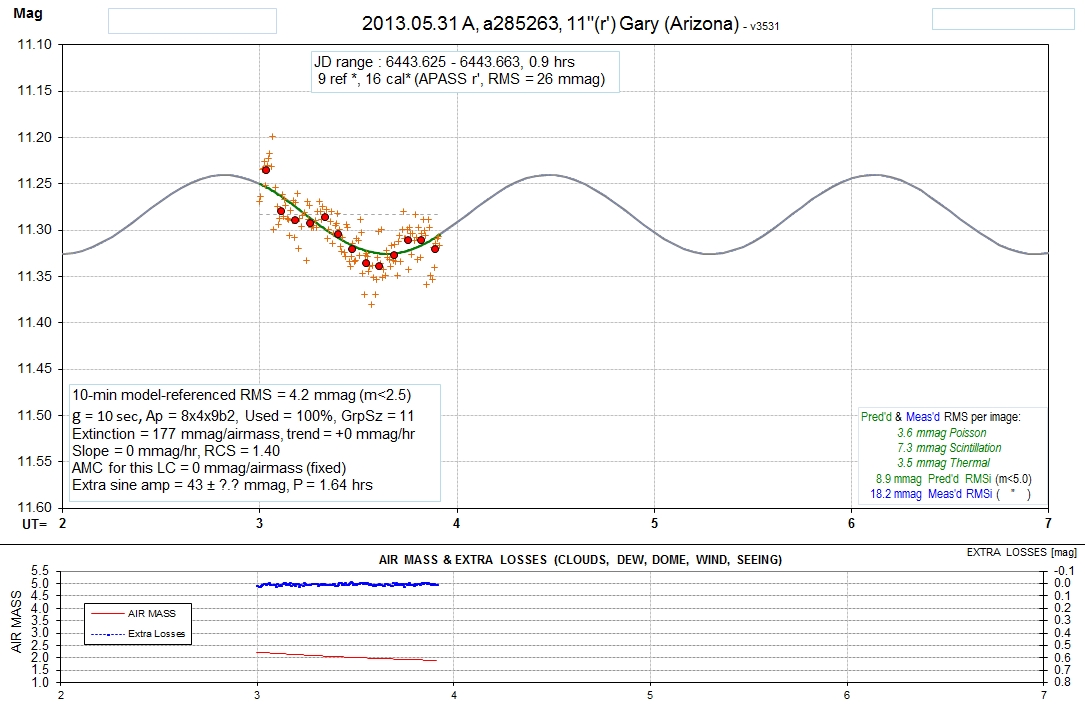
data
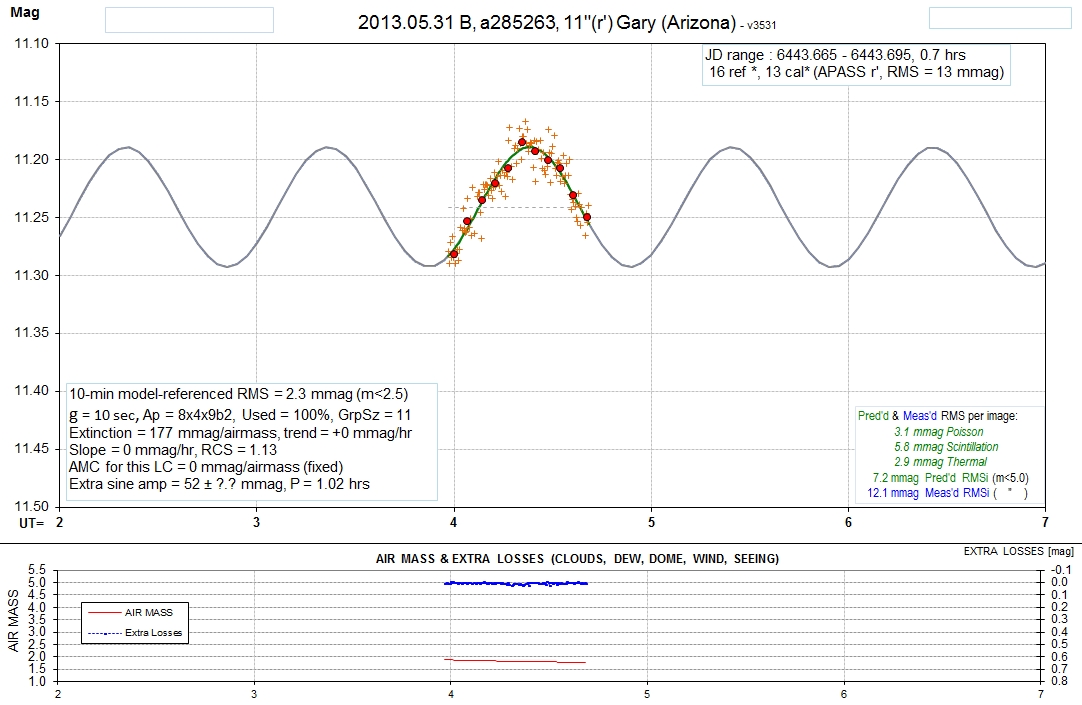
data
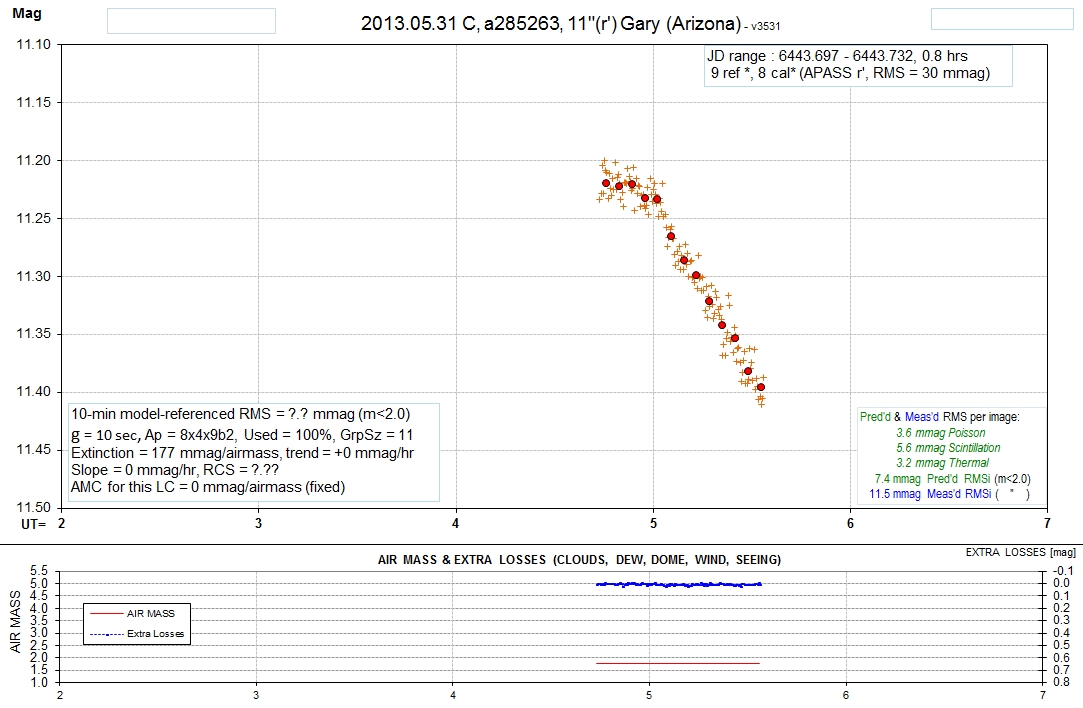
data
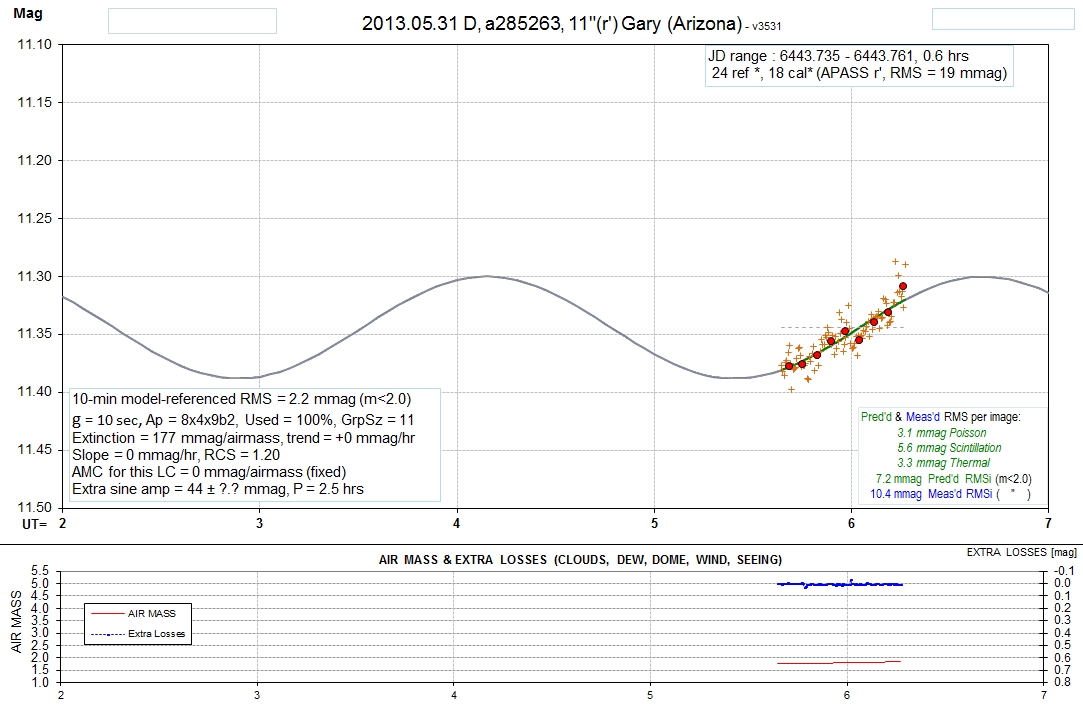
data
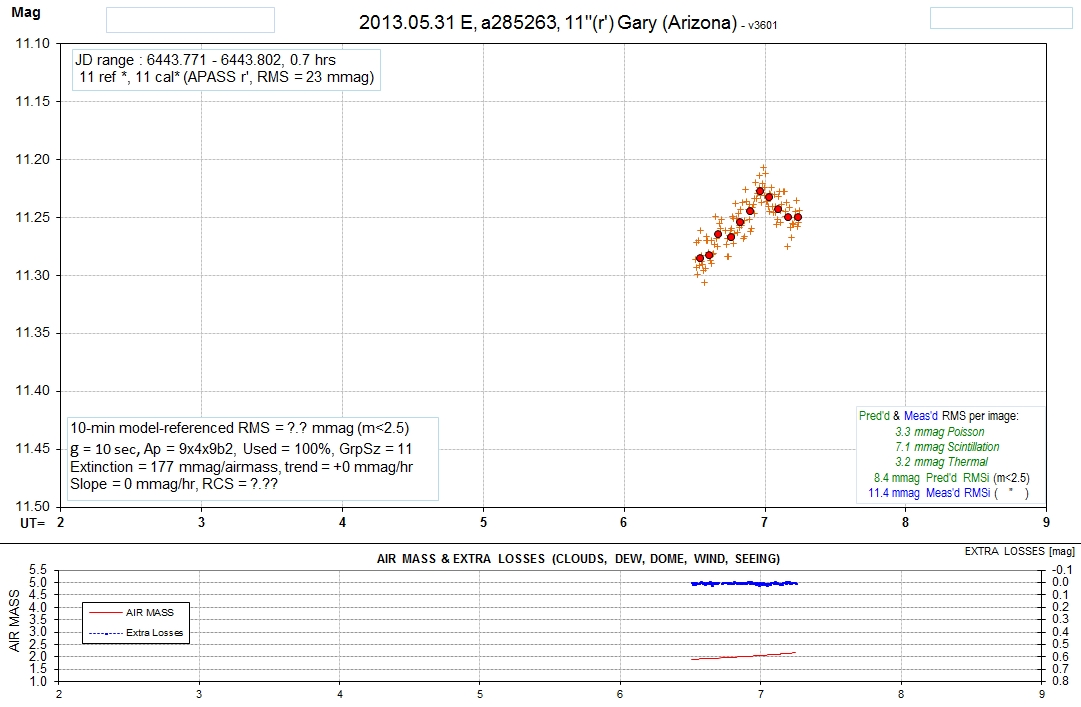
data
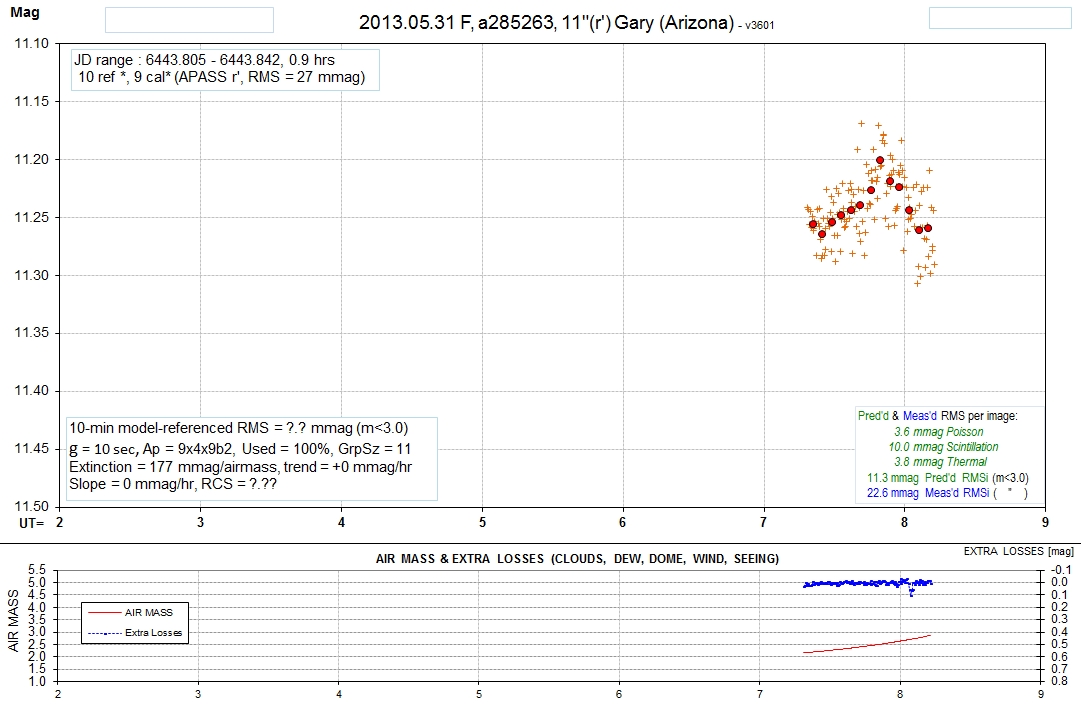
data
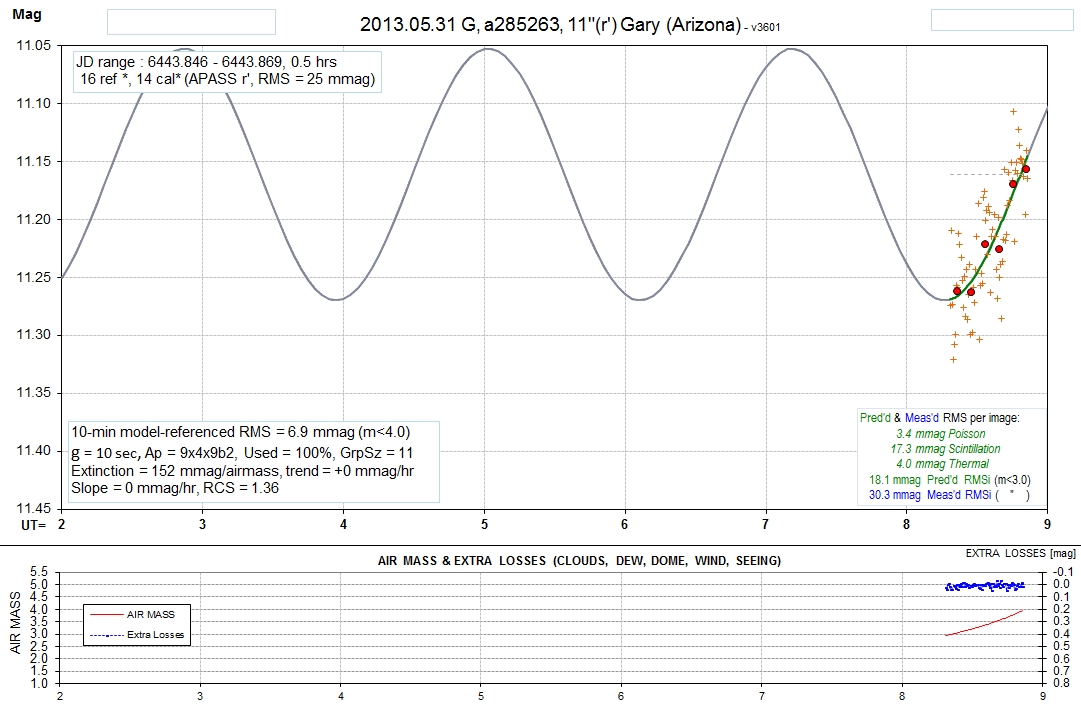
data
2013.05.30
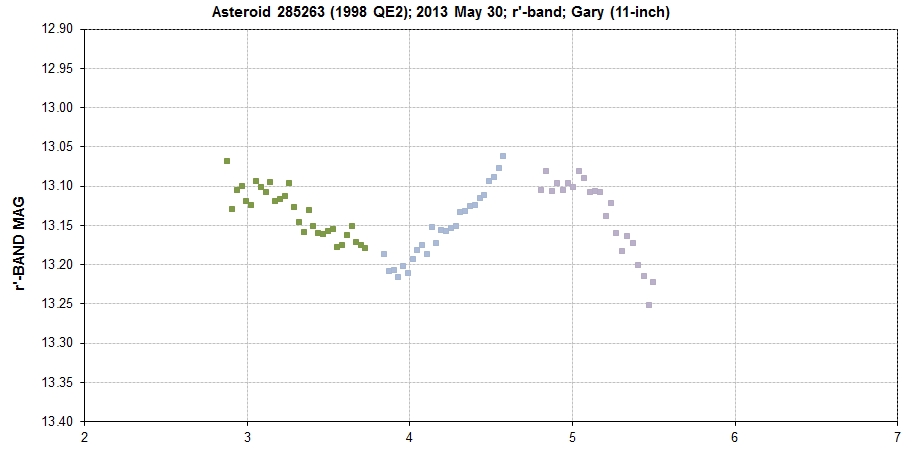
Data for
Entire Observing Session
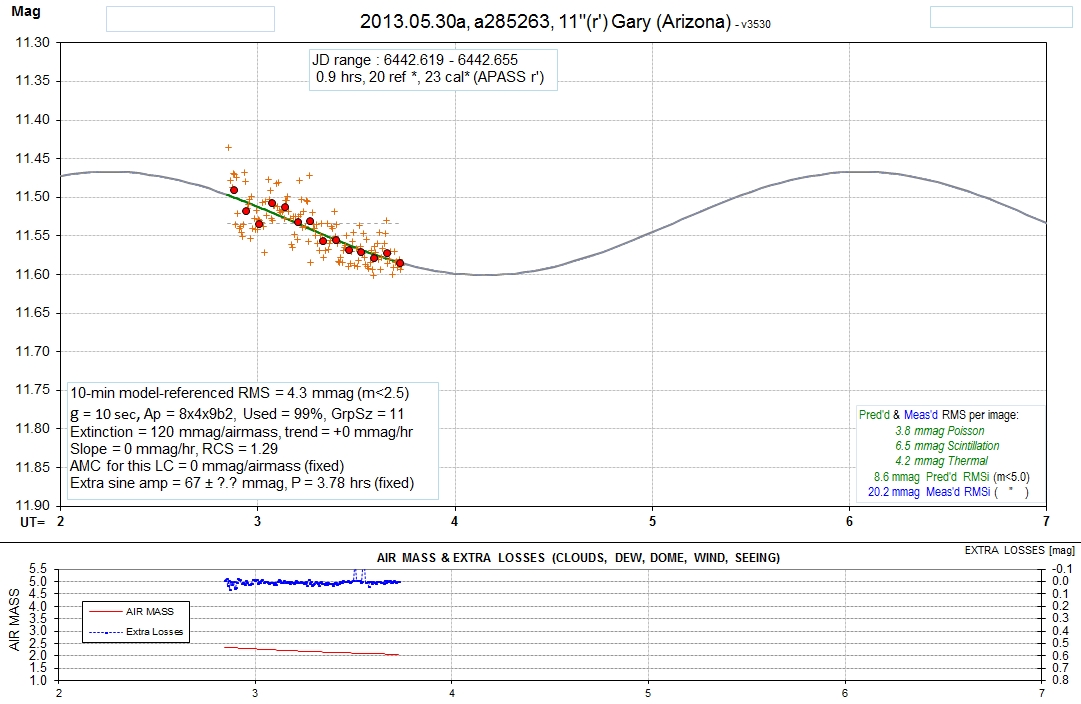
data
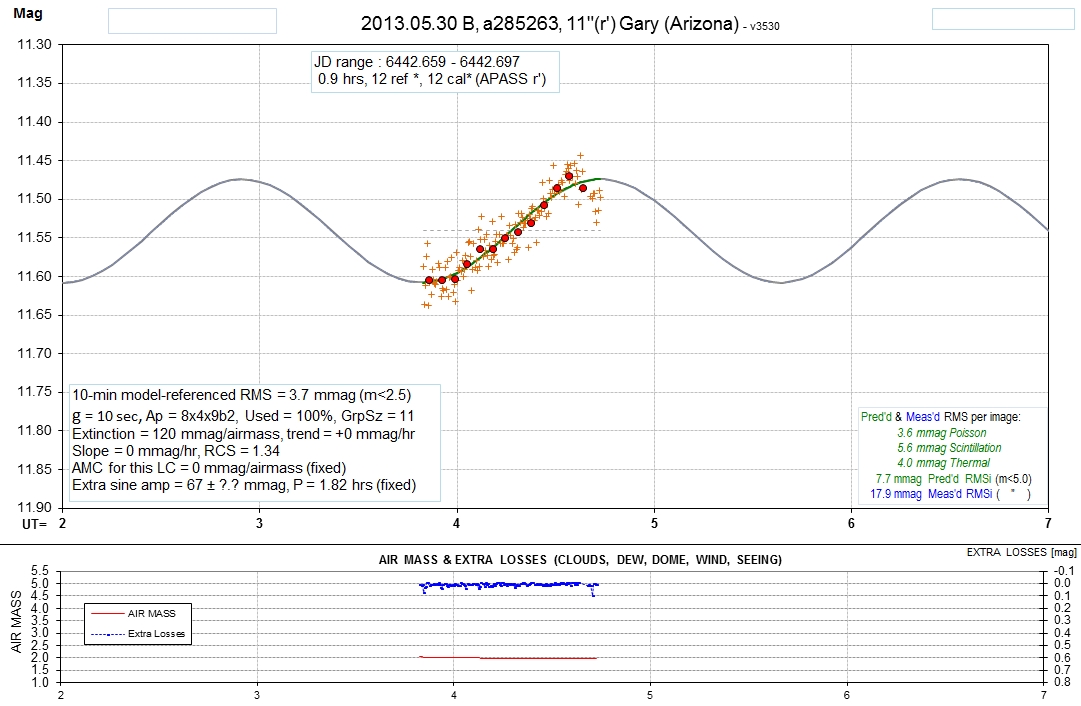
data
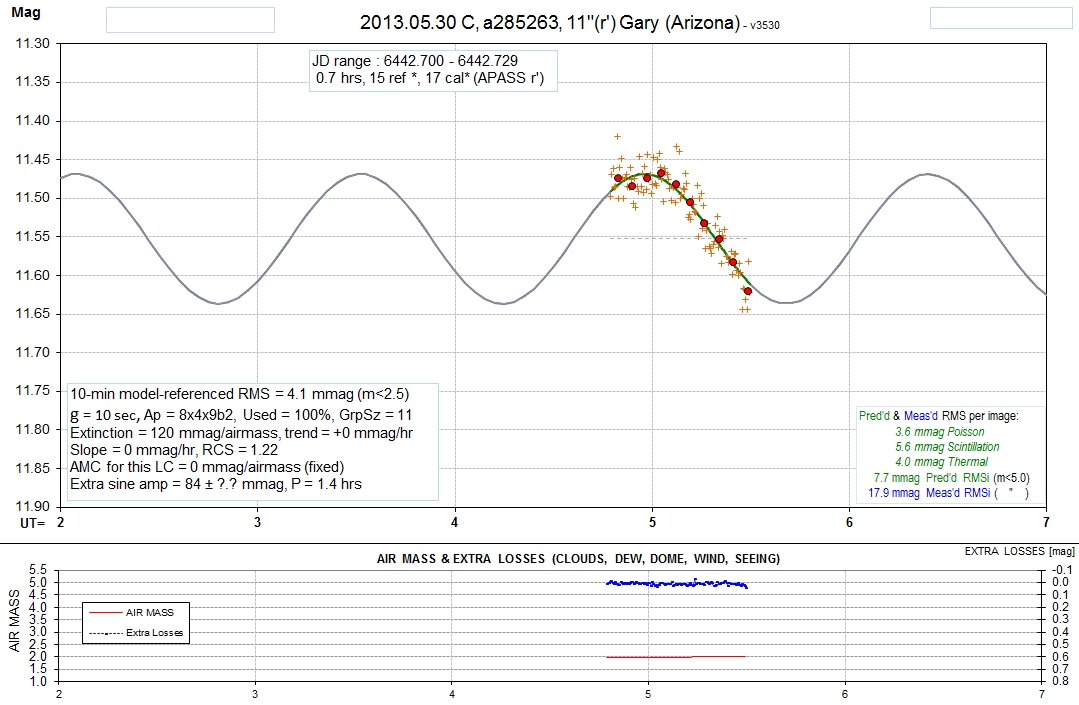
data
2013.05.29
3 FOV segments, not yet
processed
A secondary event is predicted for 8.2 UT.
2013.05.28
5 FOV segments, not yet processed
2013.05.27
5 FOV segments, not yet processed
2013.05.26
2 FOV segments, not yet processed
A primary event is predicted for 2.0 UT.
2013.05.25
3 FOV segments, not yet processed
2013.05.24
1 FOV segment, not yet processed
A secondary event is predicted for 3.0 UT.

Related Links
Hardware &
Analysis Procedures
Results (home)
____________________________________________________________________
WebMaster: Bruce L. Gary. Nothing on this web page is copyrighted. This
site opened: 2013 May 29.




























































